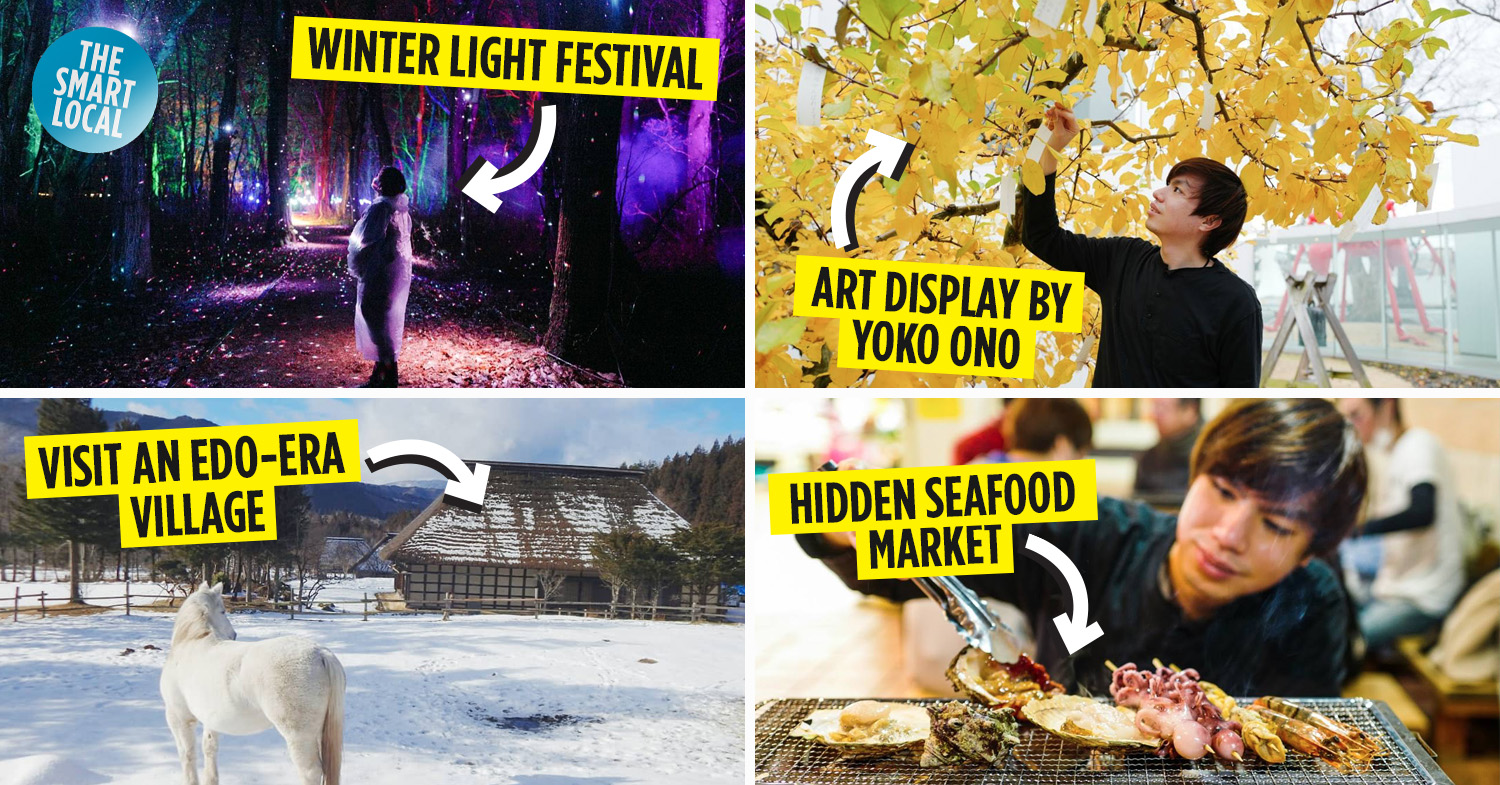Things to do in Aomori & Iwate
Think “snow” and “Japan” and Hokkaido is one of the first places that come to mind. But hidden just beneath it, on the northern tip of Japan’s main island is one of the country’s best kept secrets: Aomori and Iwate, two prefectures in the Tōhoku region that possess a fantastical charm with its surreal winter landscape and enchanting legends.
Lose yourself in local myths and fairy tales, frolic in wintery wonderlands and even try your hand at a Winter Olympic sport. If you’re looking to add a little dimension to your next trip to Japan, here are 9 things to do in Aomori and Iwate that’ll likely make you see Japan in a whole new light.
1. Pick and grill the freshest seafood at Hasshoku Center
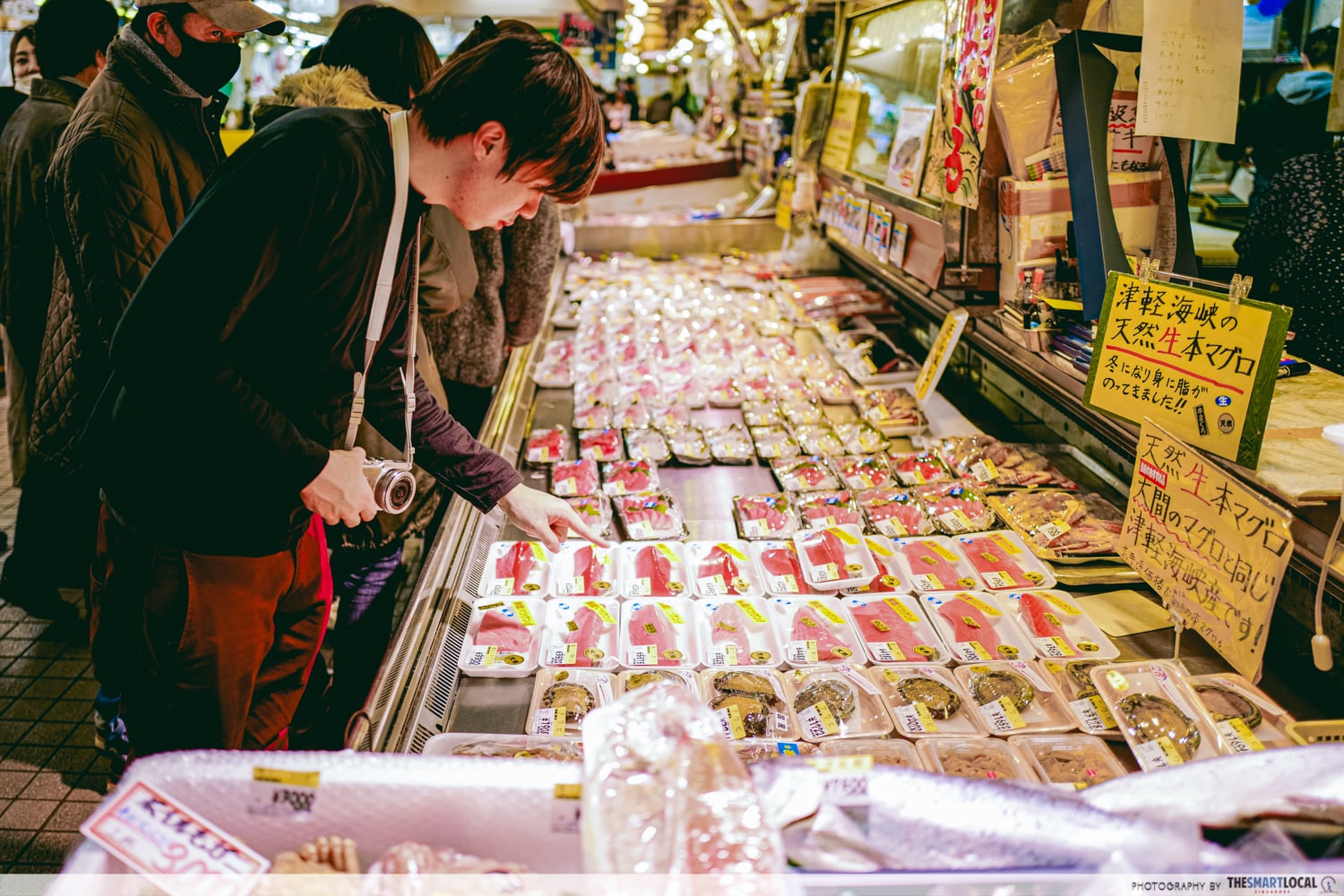
For me, a must-see in every city I visit is the local markets: one of the easiest ways to dive headfirst into local culture and their taste buds. In Aomori’s Hachinohe, Hasshoku Centre is the place to go.
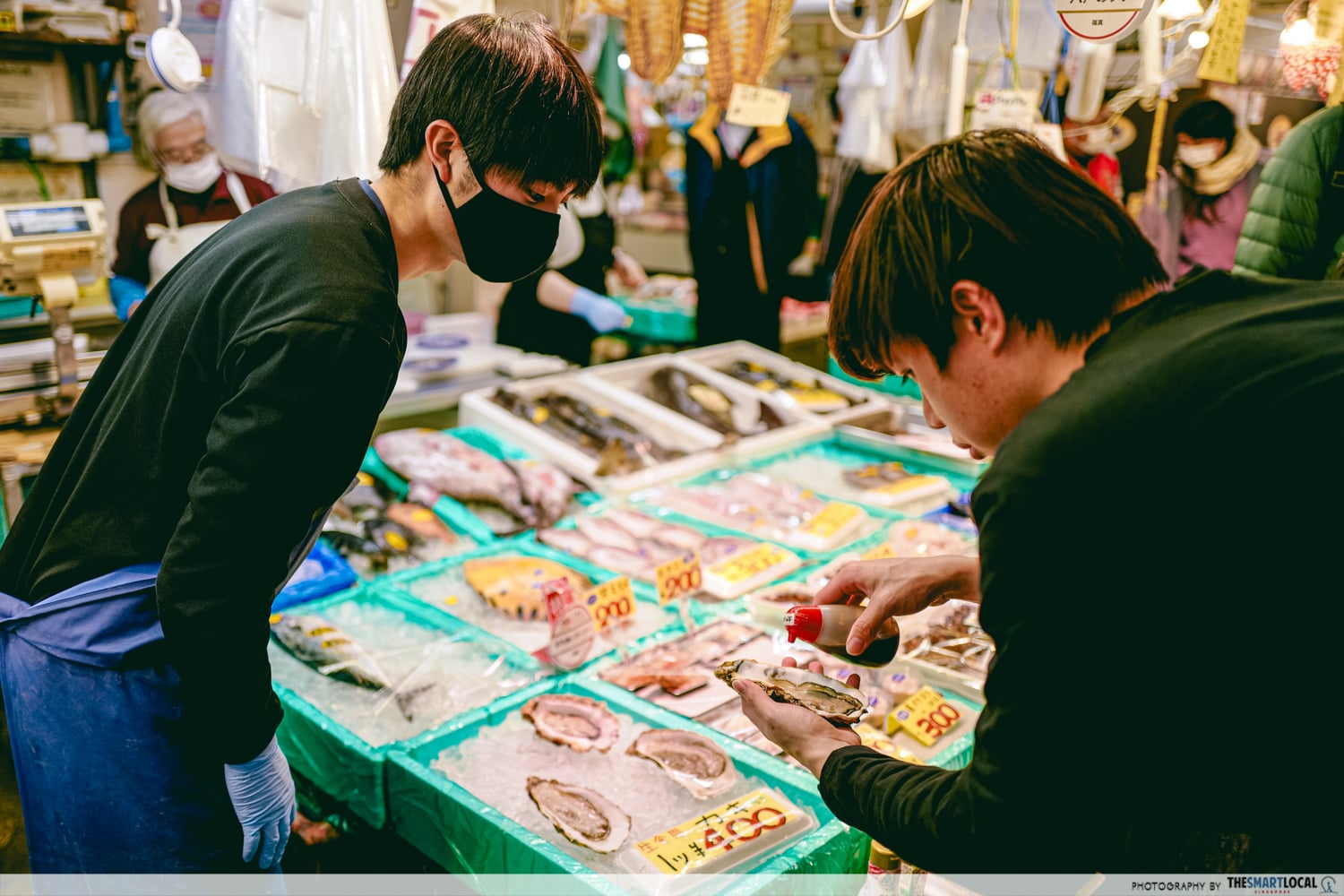
Unlike the well-known Tsukiji Market in Tokyo, this seafood market is a hidden gem for its 60+ stalls touting the freshest catches of the Northern seas, meats, fruits, alcohol, and sweets with local-friendly price tags to match.
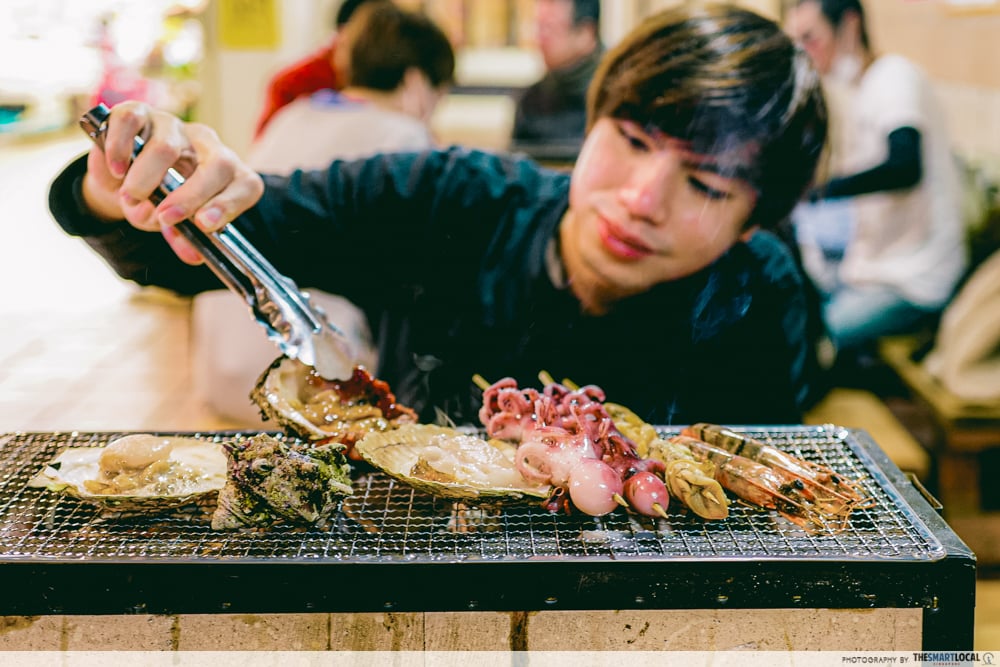
The market houses Shichirin Mura, a dedicated cooking area where you can rent a Shichirin to grill your top seafood picks almost immediately after purchasing them.
At this point, you might be thinking: Why am I buying raw food? At Hasshoku Center, rather than bringing your food to one of the restaurants situated within the market for chefs to whip up your buys, you can DIY your meal on a Shichirin, a traditional charcoal grill used by locals.
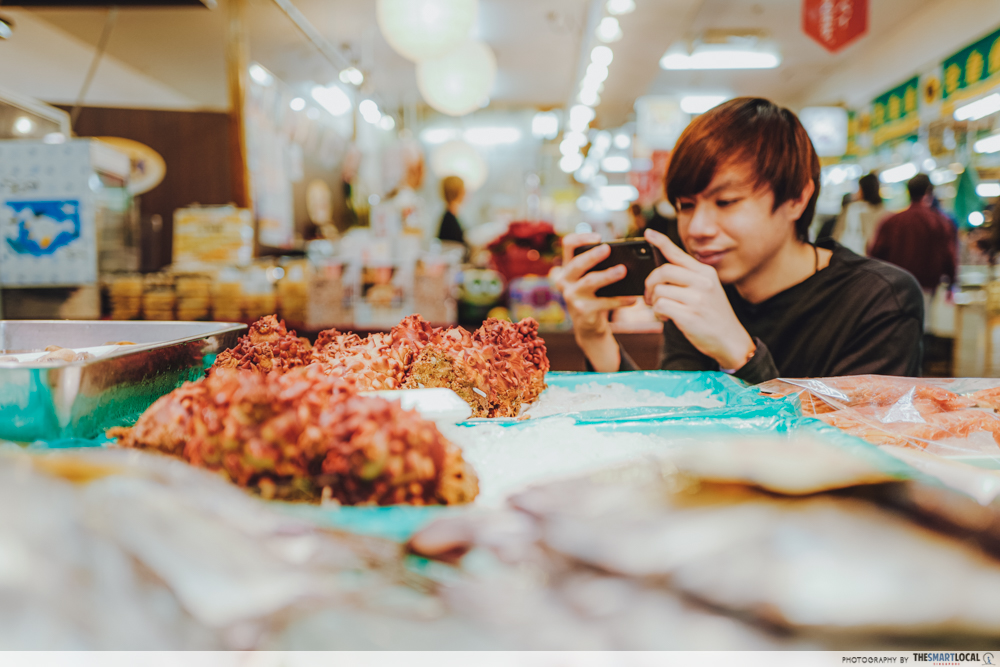
I can’t say that I was able to detect all 5 when I had it, but it definitely had an umami taste whether it was grilled or eaten raw.
One of the things that might catch your eye as you walk around the market is the red alien-like fruit that looks like it’s from a fairy tale or even a different planet. Hoya, also known as a Sea Pineapple, can only be found in the Northeastern part of Japan and is said to be unique since it encompasses all 5 tastes a human can detect – sweet, sour, salty, bitter and umami.
Hasshoku Center
Price: Free [Market Admission], ¥400/pax (~S$3.95/pax) [Shichirin rental]
Address: 22-2 Aza-Kansai, Kawaragi, Hachinohe, Aomori 039-1161, Japan
Opening hours: Thu-Tue 9am-6pm (Closed on Wednesdays)
Contact: +81 17-828-9311 | Hasshoku Center website
2. Check out art by the likes of Yayoi Kusama and Yoko Ono at the Towada Art Center
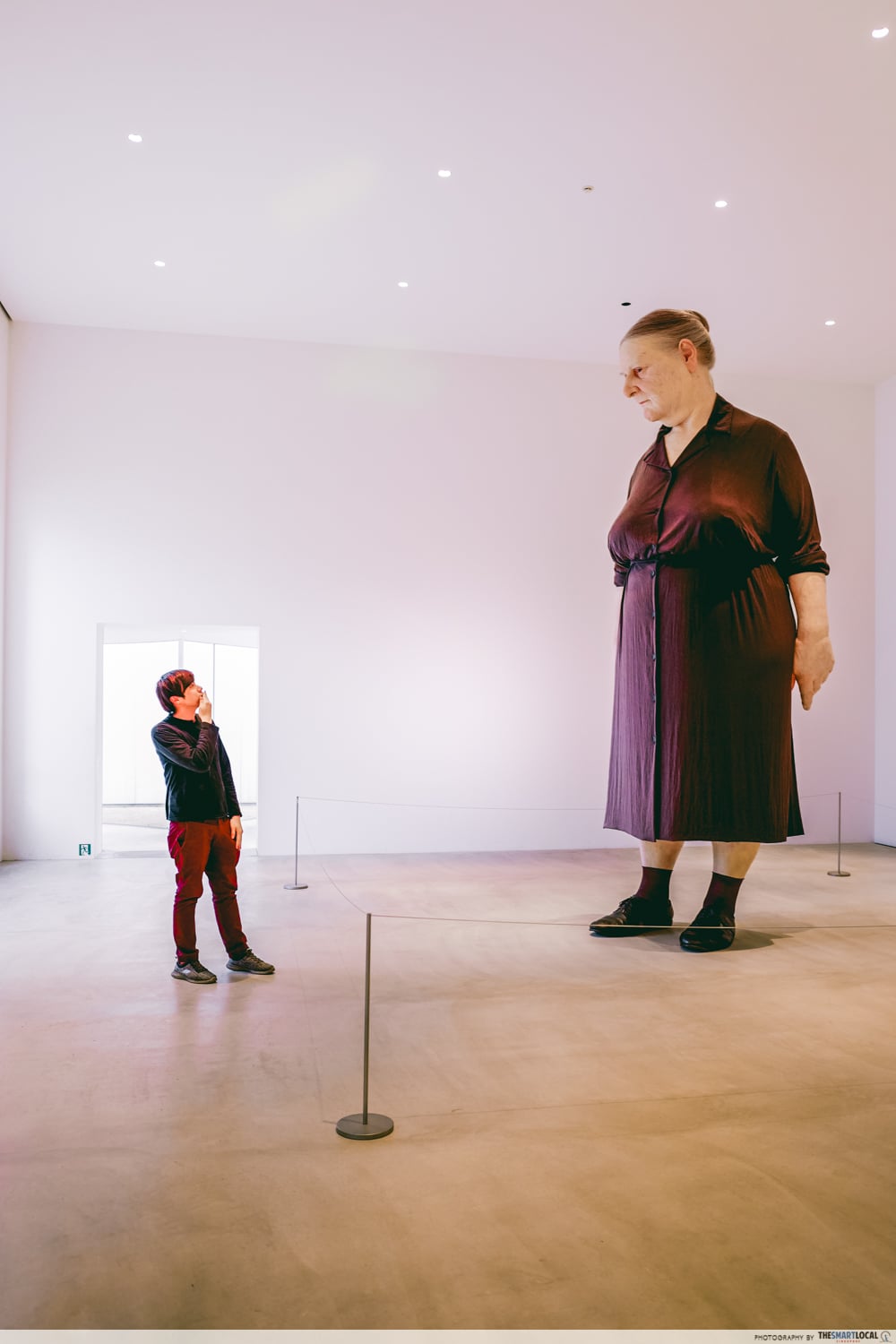
I’ve been dragged to enough art museums to know that I’m not an art aficionado. So it came as a surprise that I enjoyed the works at Towada Art Center as much as I did. The museum houses 33 art pieces from both international and Japanese artists. Works on display range from Yoko Ono’s Wish Tree for Towada, Riverbed & Bell of Peace to Ron Mueck’s Standing Woman and Yayoi Kusama’s Love Forever, Singing in Towada.
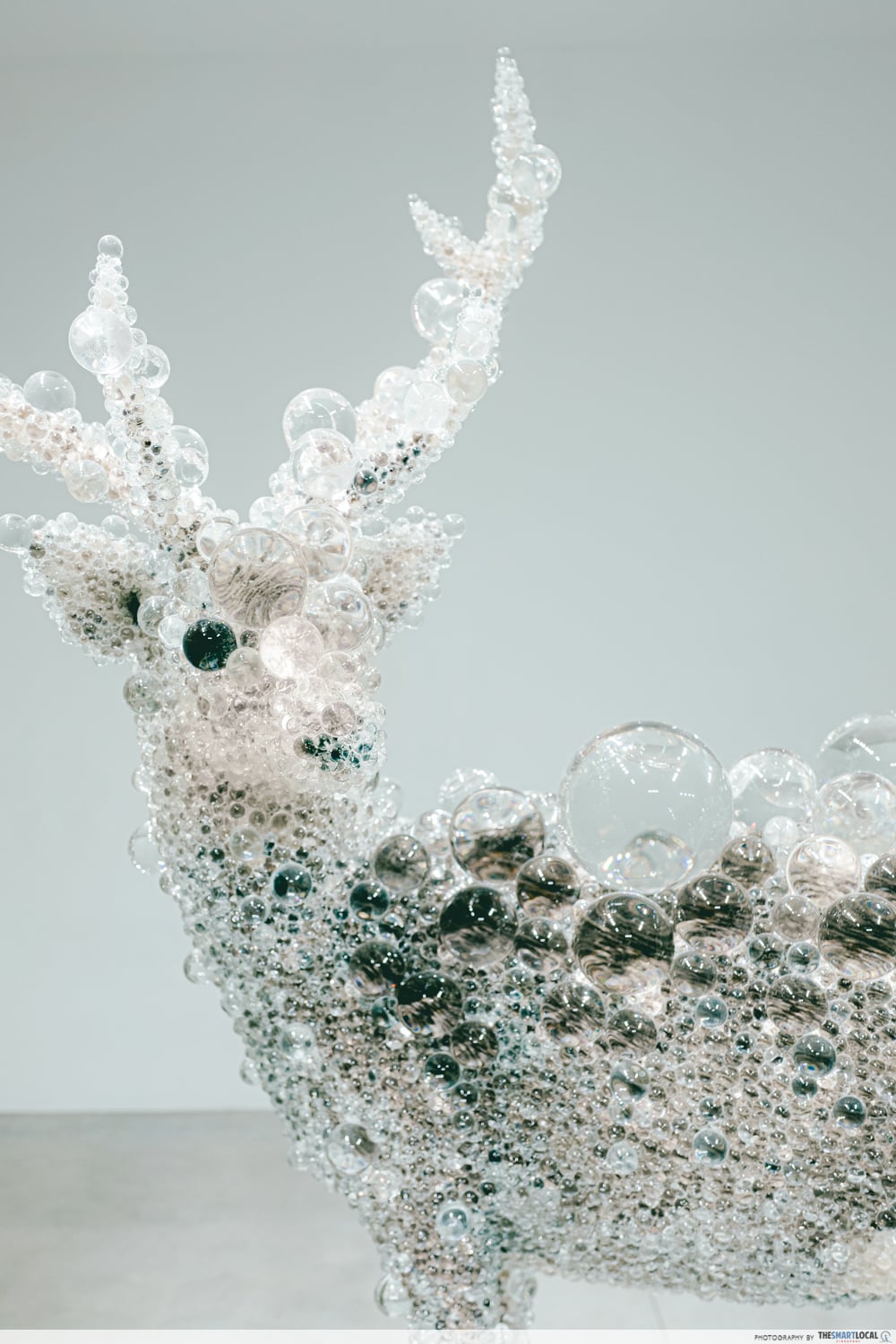
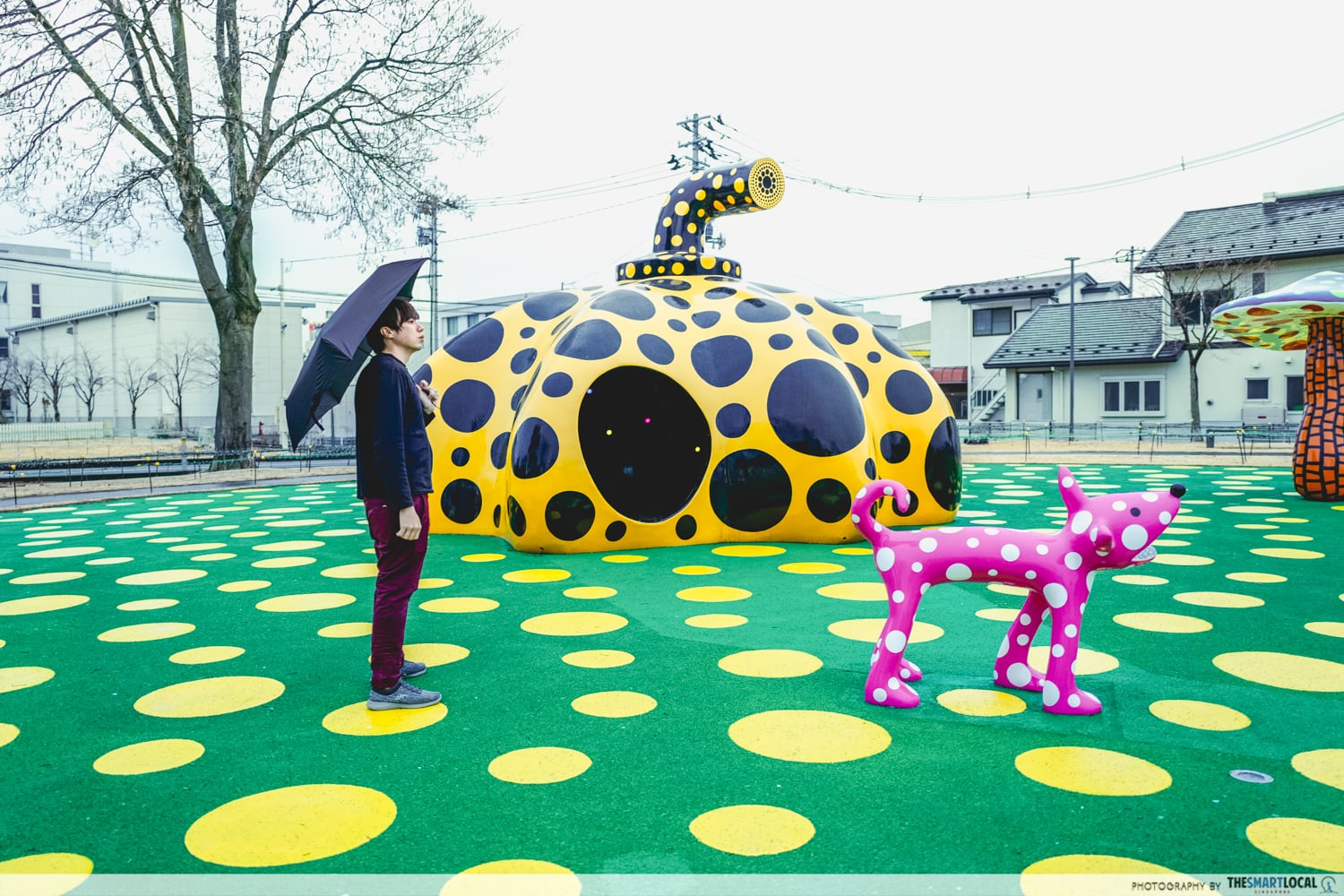
Another interesting bit about Towada Art Center, is that every indoor piece is commissioned for its very own room and the room itself becomes an integral part of the artwork. Each piece utilises spatial awareness to create a different sense of engagement with the viewer using scale, colours, or contrast.
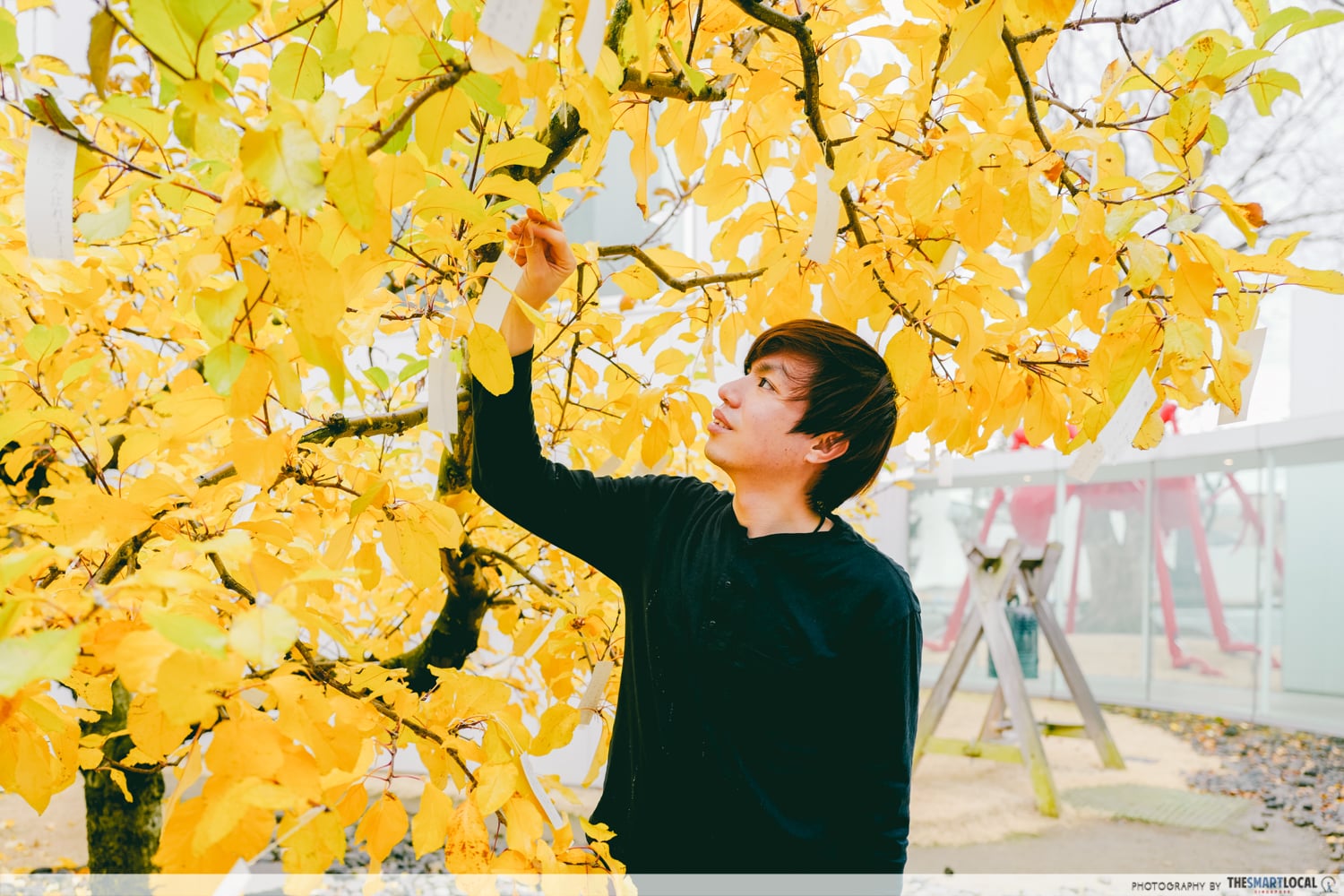
Wish Tree for Towada, Riverbed & Bell of Peace, Yoko Ono – Visitors write their wishes on a piece of white paper, ring the bell of peace, and then hang in on the wish tree.
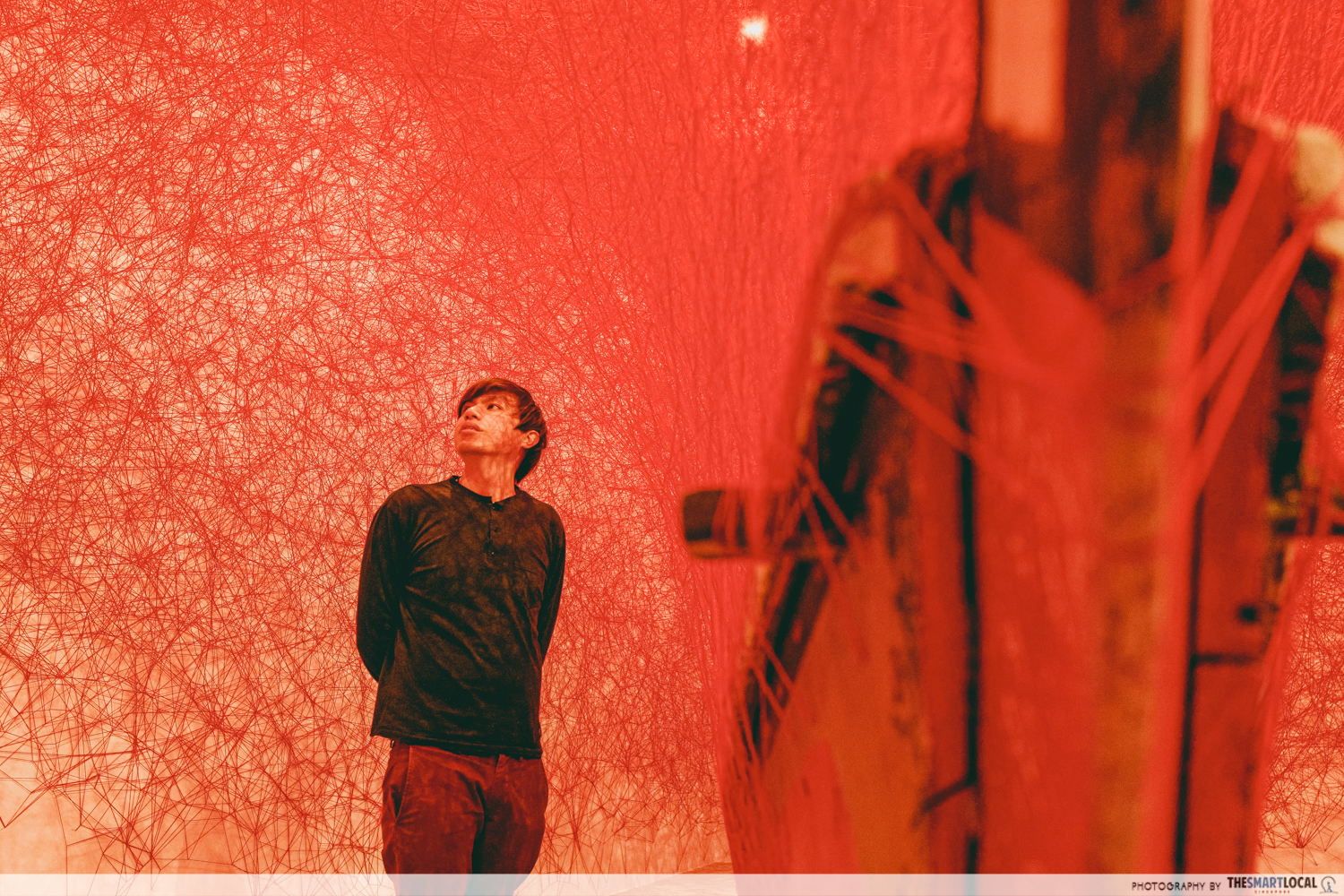
As I walked into Shiota Chiharu’s “Memory of Water”, I felt like I was physically absorbed into the art piece, surrounded by endless red threads intricately interwoven around me.
A brand-new edition to the permanent collection in 2021, Shiota Chiharu’s “Memory of Water” was by far my favourite piece, with the simplicity of red threads conveying so much in terms of bonds, fate, human connections and more. There was something surprisingly alluring about it with its sheer otherworldly appearance. It was both strikingly complex, and also simple at its core, containing nothing more than red threads and a single wooden boat.
BONUS: Tuck into Aomori’s famous apples with a taste of some apple curry
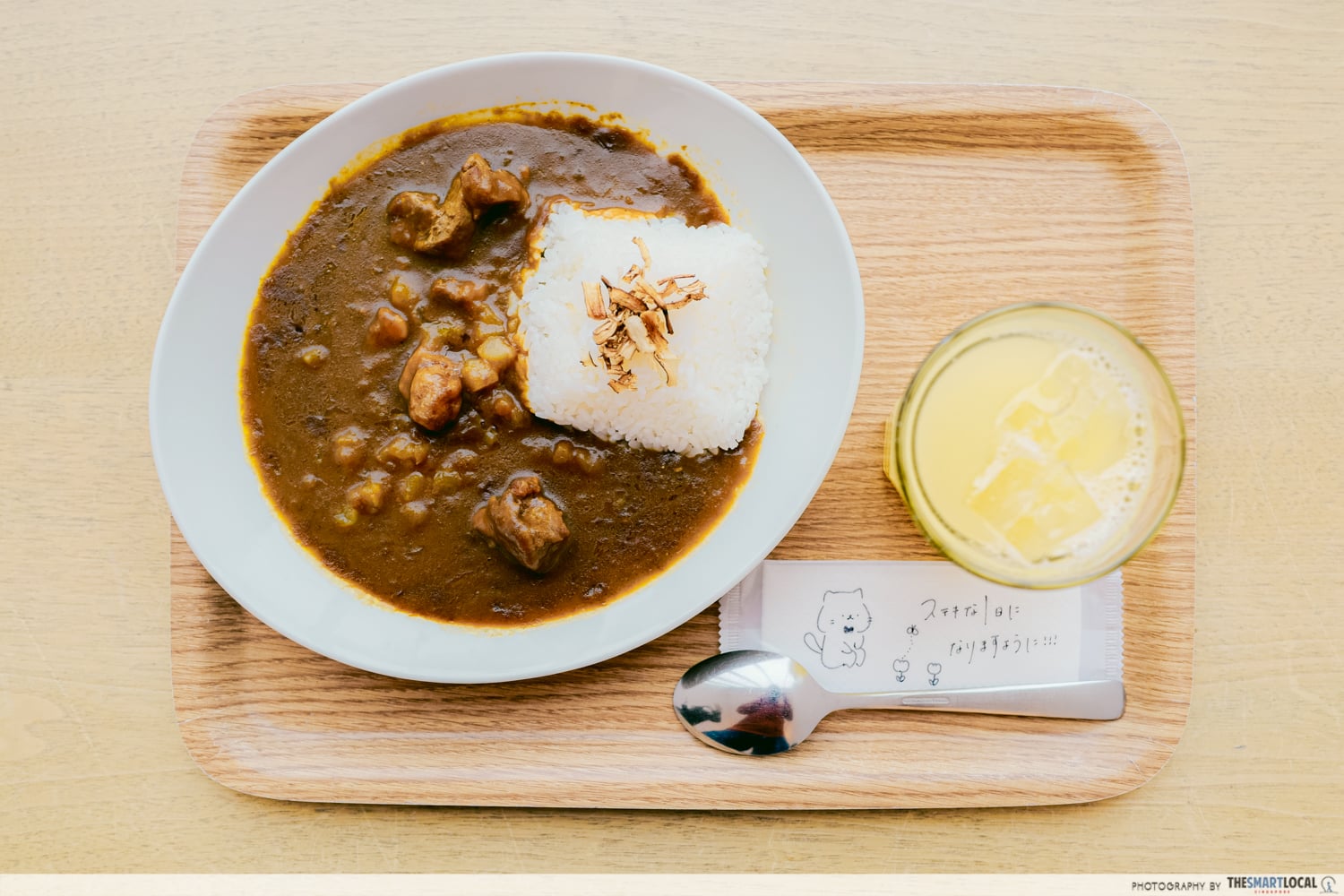
If there’s one thing about Aomori to note is that the prefecture is synonymous with apples. Naturally, you shouldn’t miss out on them.
To refuel, try out some local curry made with grated apples and pork cubes (¥1,110, ~S$10.90) at the Cube Café & Shop. The sweetness and tartness of the apples lift the heavy richness of the curry to give it a much lighter aftertaste.
Pro tip: Check out their apple pies (¥460, ~S$4.55, made by 70-year-old local Towada patisserie, Fukuda, as well as seasonal sweets inspired by the exhibitions.
Towada Art Center and Cube Café & Shop
Price: ¥1,800 (~S$17.85) [Permanent Collection + Exhibition]
Address: 10-9 Nishi-Nibancho, Towada-shi, Aomori 034-0082, Japan
Opening hours: Tue-Sun 9am-5pm (Closed on Mondays)
Contact: +81 17-620-1127 | Towada Art Center website
3. Frolic in a winter wonderland at Towada Shrine
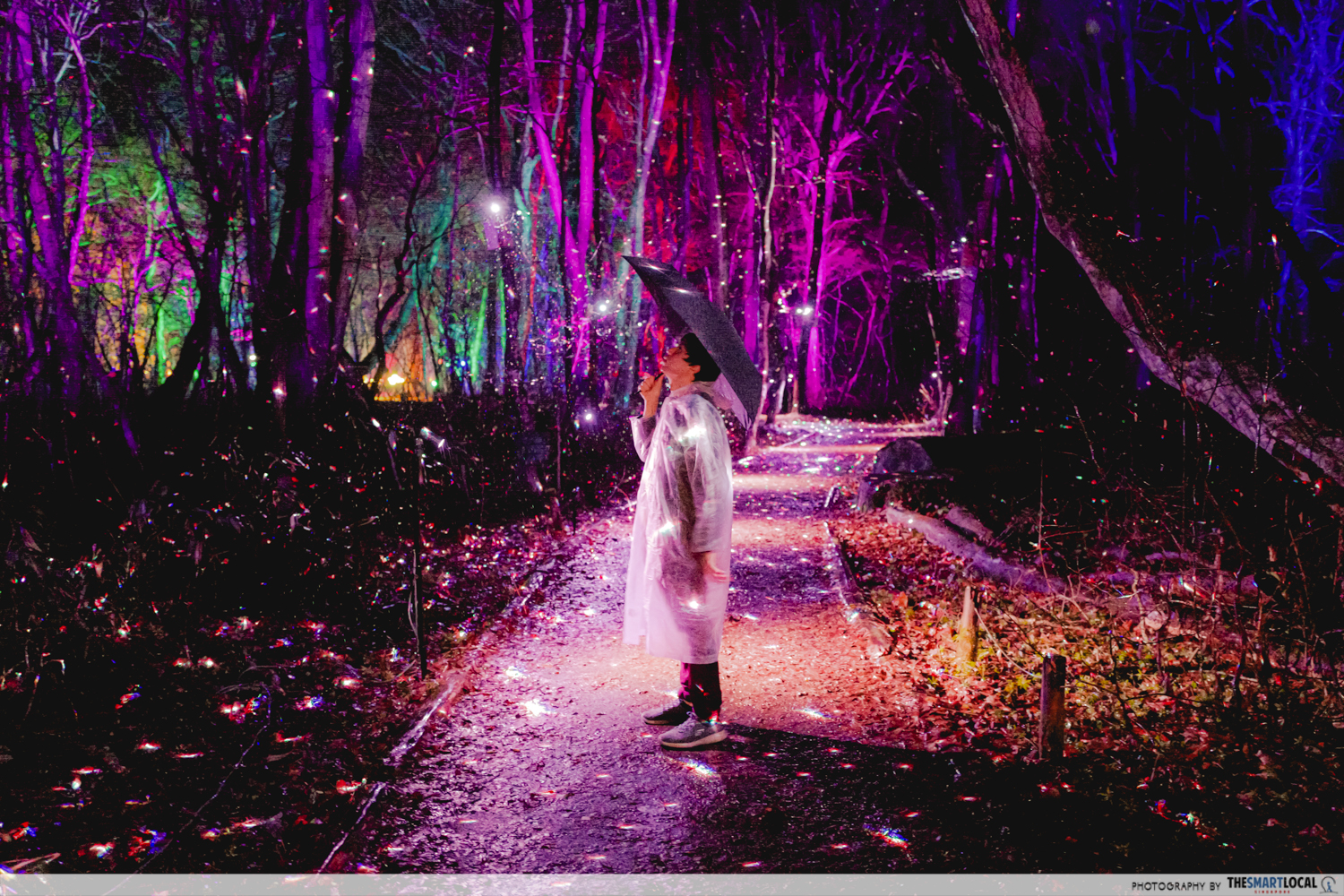
Sitting atop an active volcano, Lake Towada is Honshu’s largest crater lake and some people think that volcanic activity could have been the true reason behind the legends of Towada Shrine.
Considered one of the most holy sites in Japan with monks from all over Japan once visiting for ascetic training, Towada Shrine houses Ryujin (the Dragon God) who is said to have been a monk-turned-nine-headed dragon that slayed a python ruling the lake.
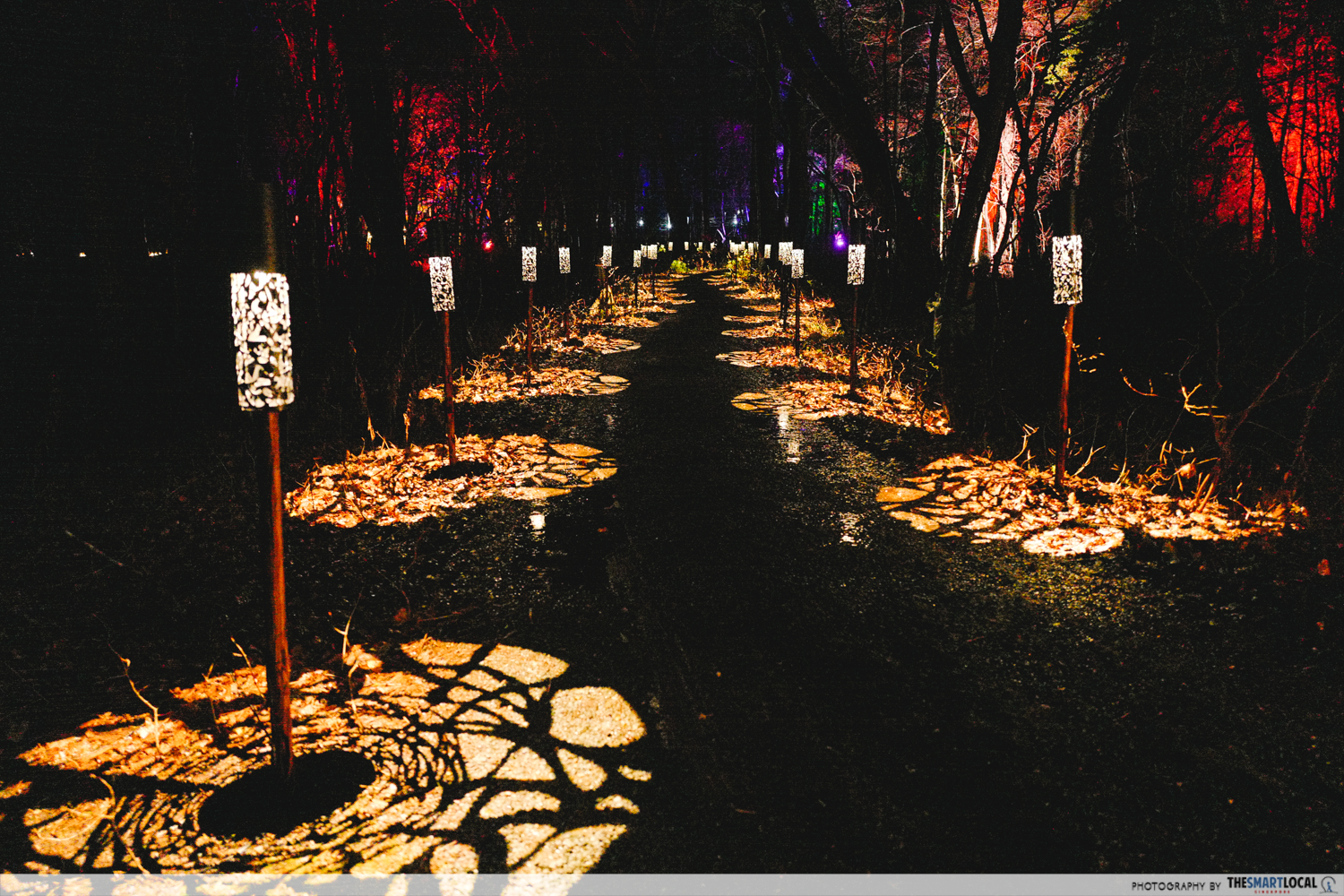
Festa Luce 2021-2022 is the second iteration of an annual illumination event at Towada Shrine that takes place from December to February each year. The illumination displays are designed as a collaboration between 2 Japanese firms, Digitec and Color Kinetics, with the technical expertise of German illumination firm, MK Illumination.
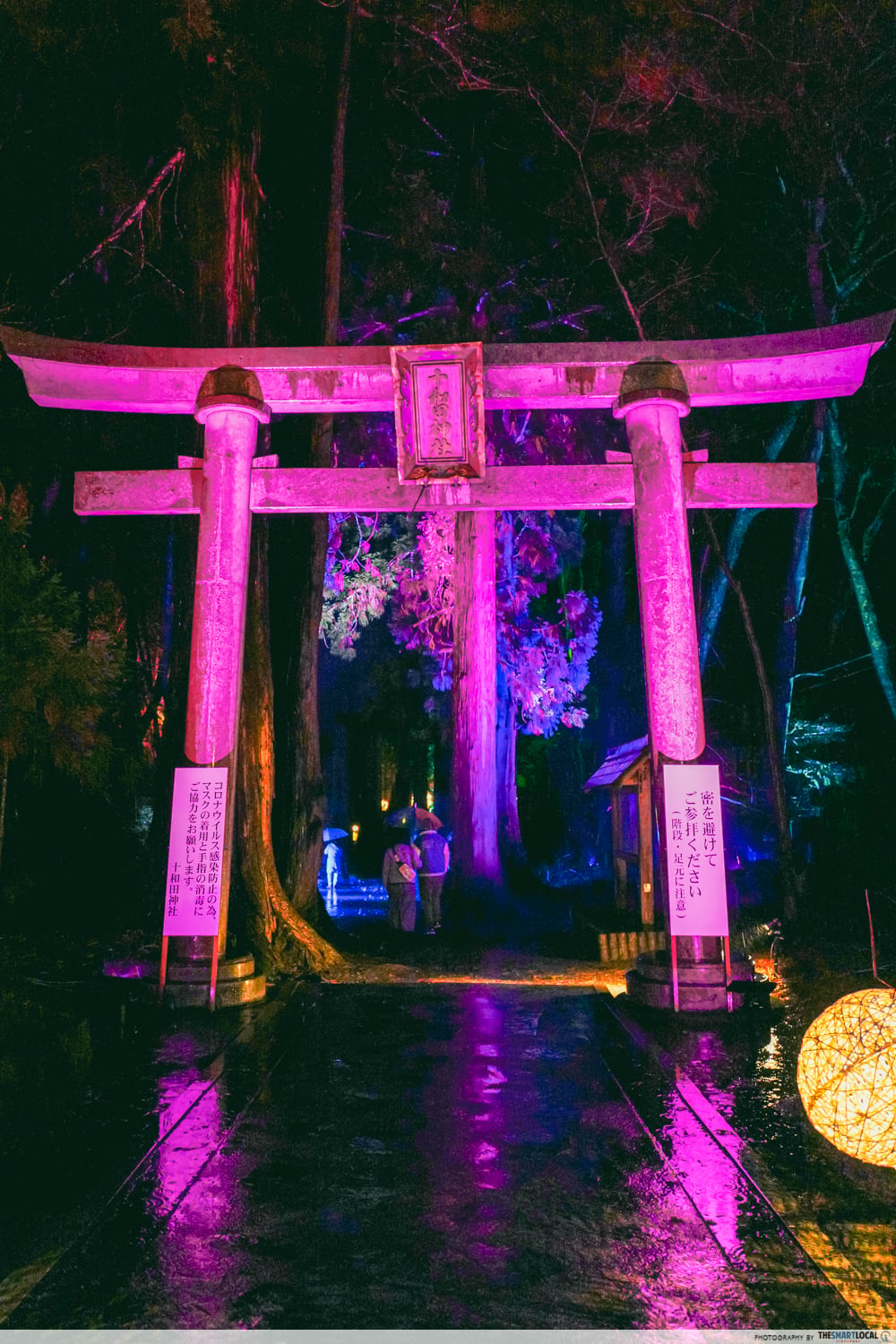
As you pass through the first torii gate, you’ll instantly be transported into a fantastical realm of illuminated deer, bears, and other native animals alongside the volcanic rock formations of the area. Follow the route through the temple grounds and get lost in the legend of Ryujin through a series of breathtaking installations of lights, colours, and sound.
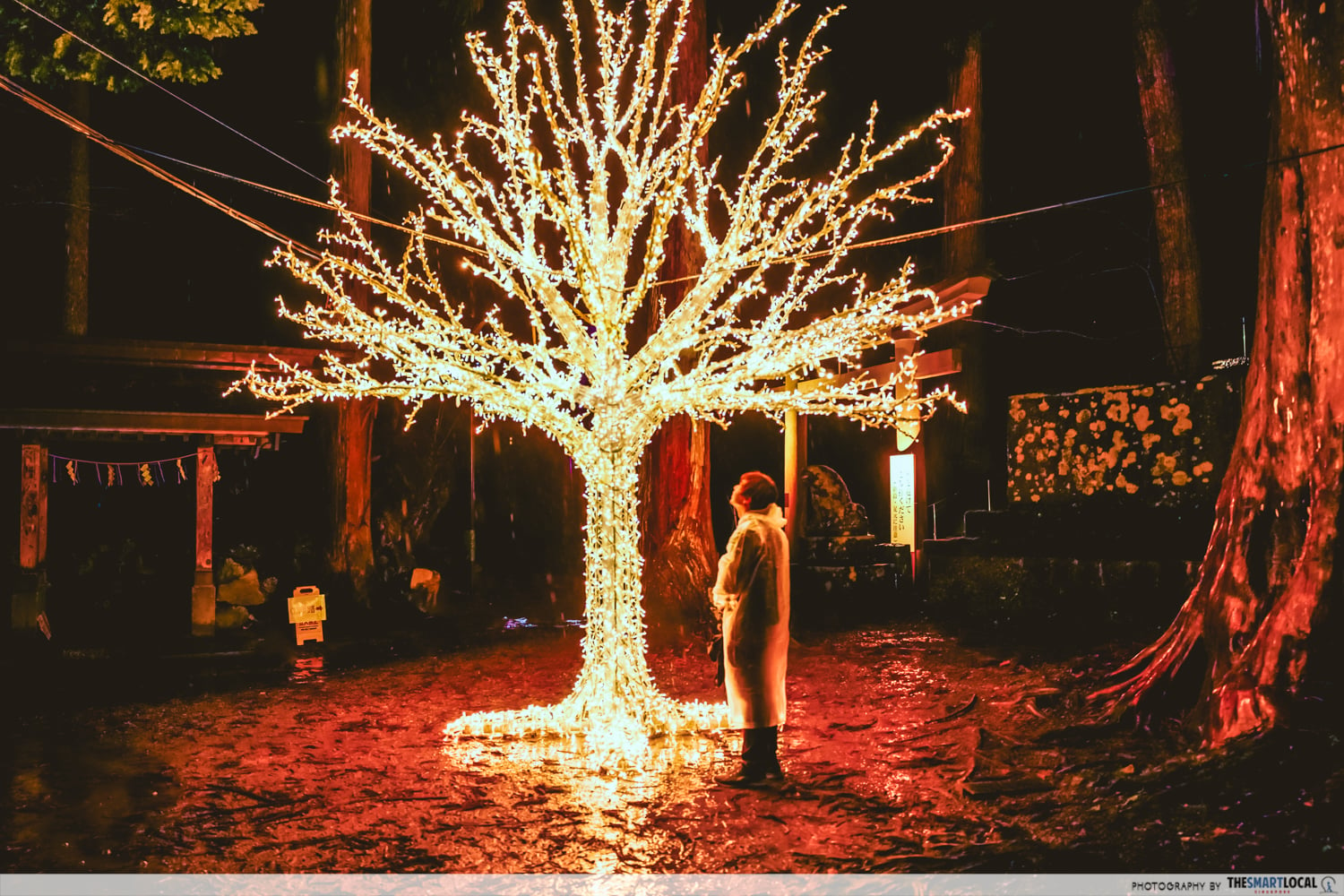 As I walked through the various displays, I could feel a sense of otherworldly serenity throughout the temple grounds.
As I walked through the various displays, I could feel a sense of otherworldly serenity throughout the temple grounds.
The shrine’s main building is said to have been the site of his epic duel with the serpent. To better illustrate this significant history, an artistic interpretation of this story is elegantly projected onto the facade of the main building starting with the battle with the serpent, the rebirth from a monk into a dragon, and finally everlasting peace.
Pro tip: During weekends and public holidays, you can even catch winter fireworks up in the sky. A rare sighting, as fireworks are typically a summer-only activity in Japan.
Festa Luce
Price: ¥1,600 (~S$15.85)
Address: 14 Okuse Towada, Towada, Aomori 018-5501, Japan
Opening hours: 5.30pm-9pm, Daily (December to February)
Contact: +81 17-675-1531 | Festa Luce website
4. Try your hand at koginzashi embroidery & strum a traditional Japanese musical instrument
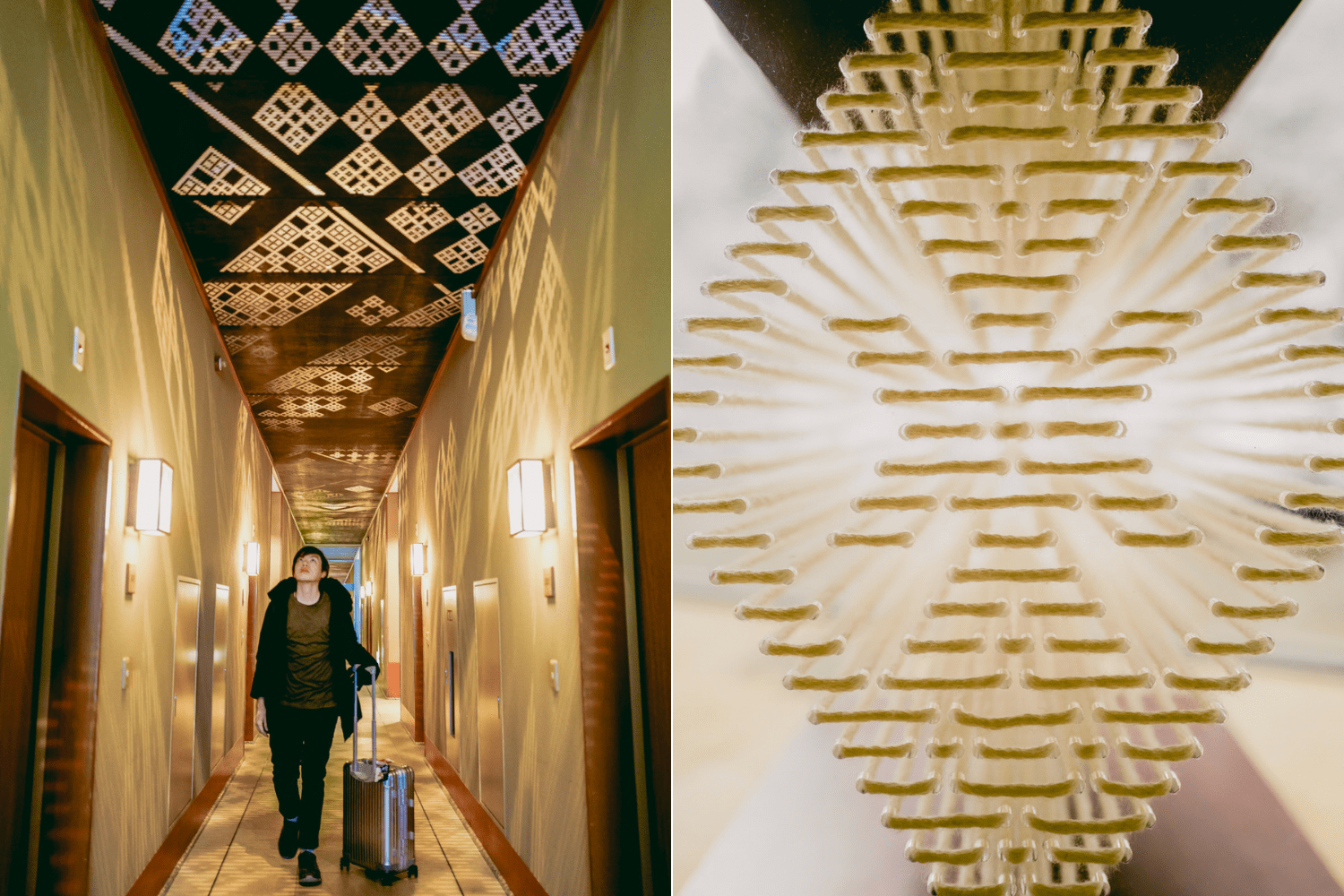
The diamond is one of the classic designs of koginzashi and you’ll see this pattern peppered around KAI Tsugaru Hoshino Resort as well.
Rather than physical souvenirs, if you’re the kind of traveller who covets hands-on experiences, then set your sights on koginzashi embroidery. This 300-year-old art form is not only a beautiful tradition, but well-steeped in history as well.
In old Tsugaru, commoners were banned from wearing cotton – a material reserved for royalty. But to survive the extreme winters, they came up with koginzashi as a creative way to add more layers to their hemp clothing to keep them warm.
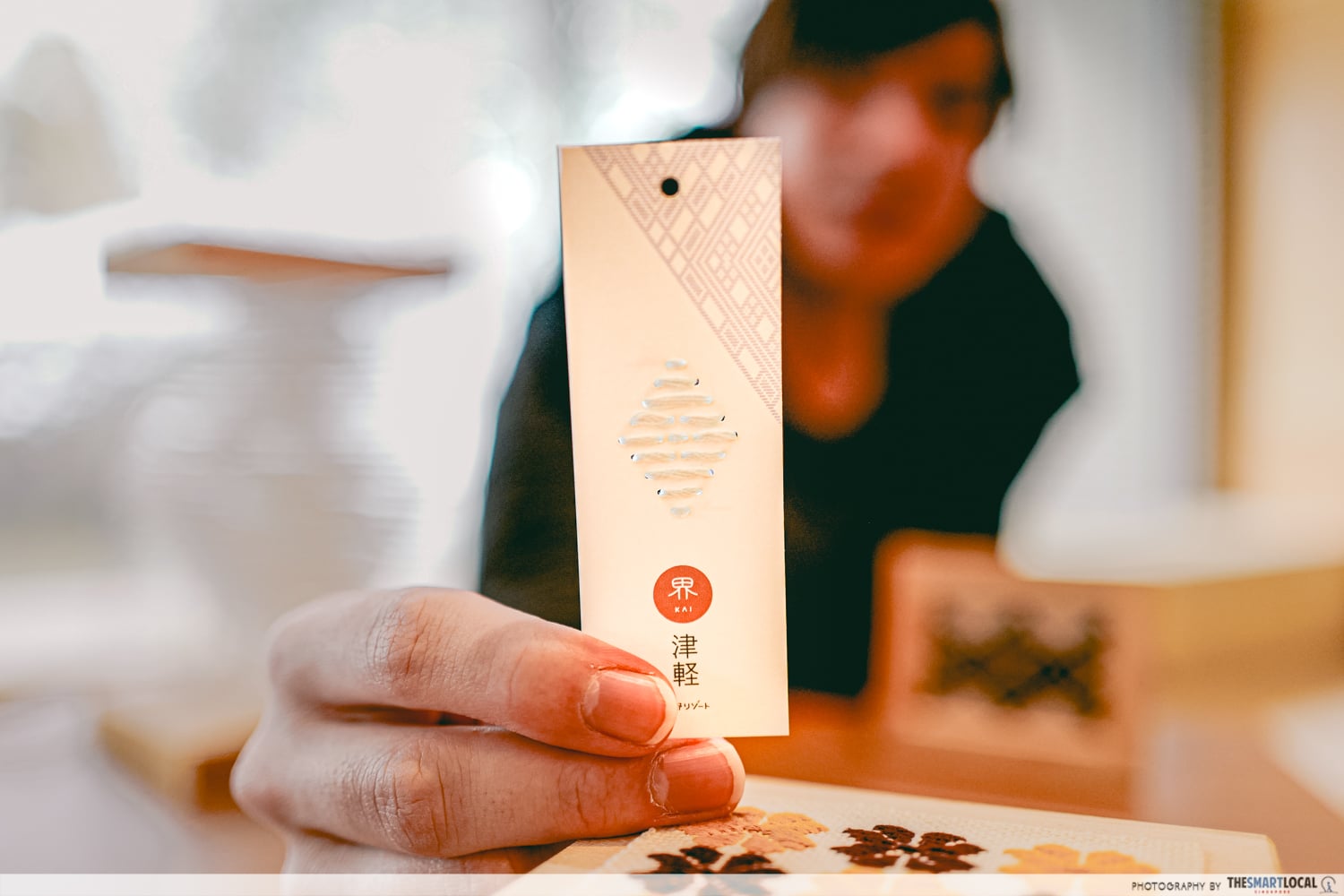
At Hoshino Resort Kai Tsugaru, guests can try out a free stitching experience by making their own koginzashi-embroidered bookmarks. The experience is a simple one, threading through the holes on the bookmark in the shape of a classic koginzashi diamond.
Typically though, the cotton yarn is woven onto the meshes of fabric, requiring delicate embroidery to be done stitch by stitch in each mesh. For those up for more of a challenge, you can try the Koginzashi Hairband Making Experience (¥550, ~S$5.45) at Shimaya, a local koginzashi embroidery shop.
Choose a coloured cloth base and a thread, then get to spend the next 30 minutes intricately threading through the little gaps in the mesh of the cloth. Don’t worry, there’s a reference design sheet and also an expert to help you through it.
Shimaya
Price: ¥550 (~S$5.45)
Address: 13-1 Hyakkokumachi, Hirosaki, Aomori 036-8035, Japan
Opening hours: 9am-6.30pm, Daily (Closed on Sunday)
Contact: +81 172-32-6046 | Shimaya website
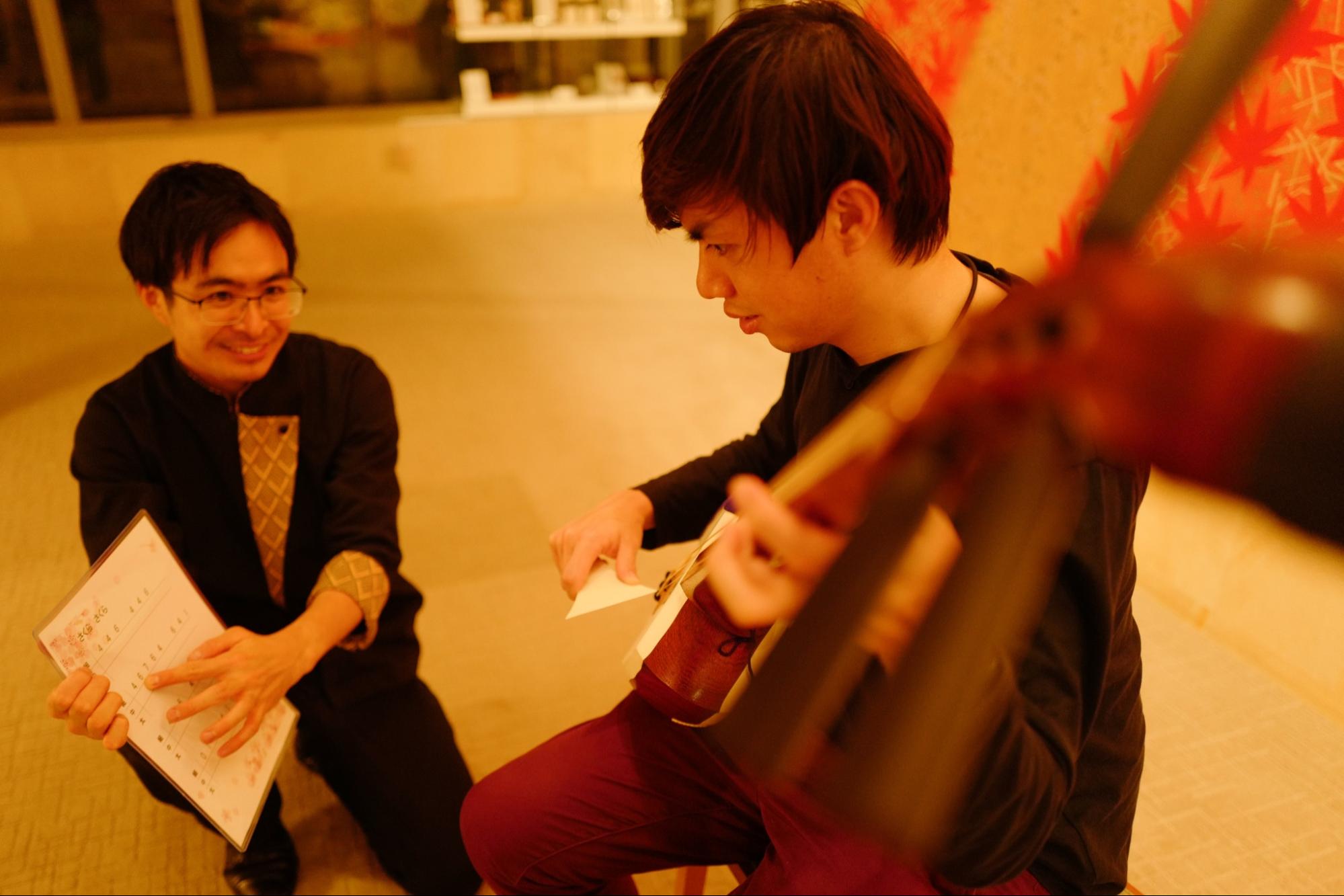 Surprisingly, I did not embarrass myself too badly on the shamisen, and even pulled off some really cool tunes.
Surprisingly, I did not embarrass myself too badly on the shamisen, and even pulled off some really cool tunes.
If you’re more musically inclined, you can also enjoy a nightly Tsugaru-Shamisen performance by a local expert at Hoshino Resort Kai Tsugaru and let the traditional tones and melodies take you back in time.
Shamisens are sort of like a traditional Japanese guitar strummed with a bachi, a large handheld triangular wooden pick that bears an uncanny resemblance to a rice paddle. Not all shamisens are made the same, as Tsugaru-Shamisens are larger and produce a stronger bass sound.
Hoshino Resort Kai Tsugaru
Price: From ¥16,000 (~S$158.55) [Per guest, per night]
Address: 36-1 Aza-Kamibotanmori, Owani, Minamitsugaru, Aomori 038-0211, Japan
Contact: +81 50-3786-1144 | Hoshino Resort Kai Tsugaru website
5. Ski at Iwate Kogen Snow Park
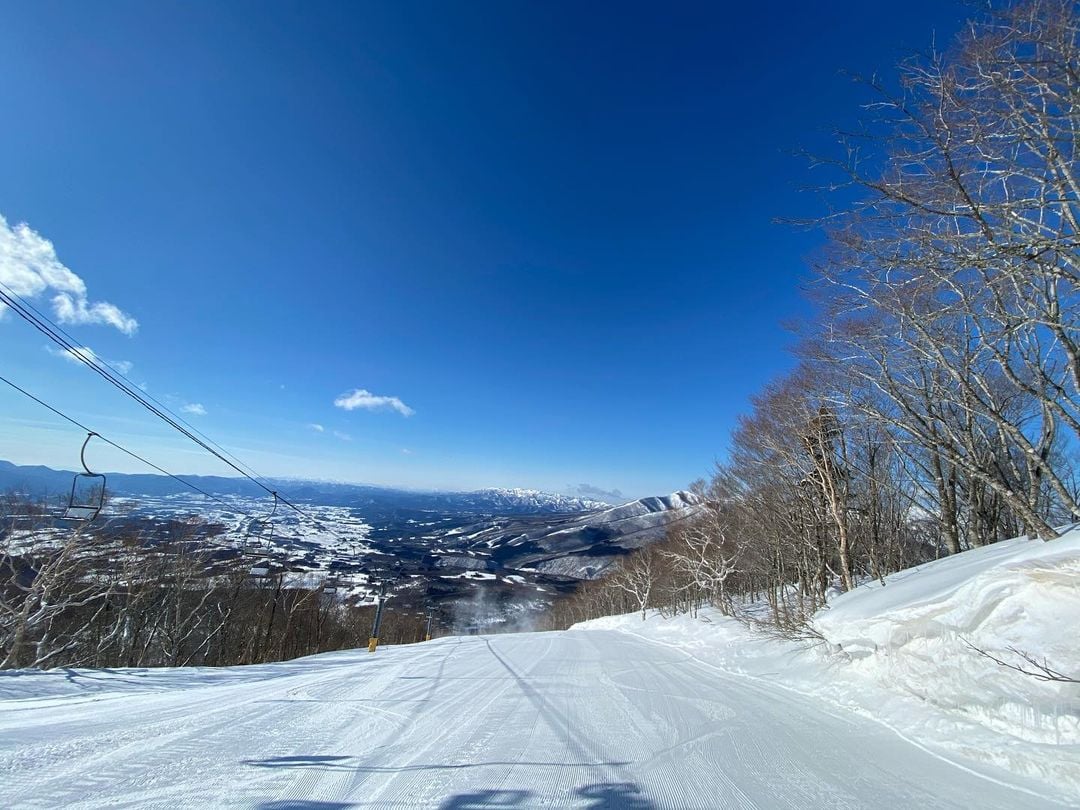
Enjoy the beautiful highlands as you ski down the slope.
Image credit: @kiyo.mcc
Coming up this far North in Japan, one definitely expects a fair amount of snow. And at Iwate Kogen Snow Park, you can ski or snowboard at the foot of Mount Iwate, one of Japan’s 100 Most Beautiful Mountains.
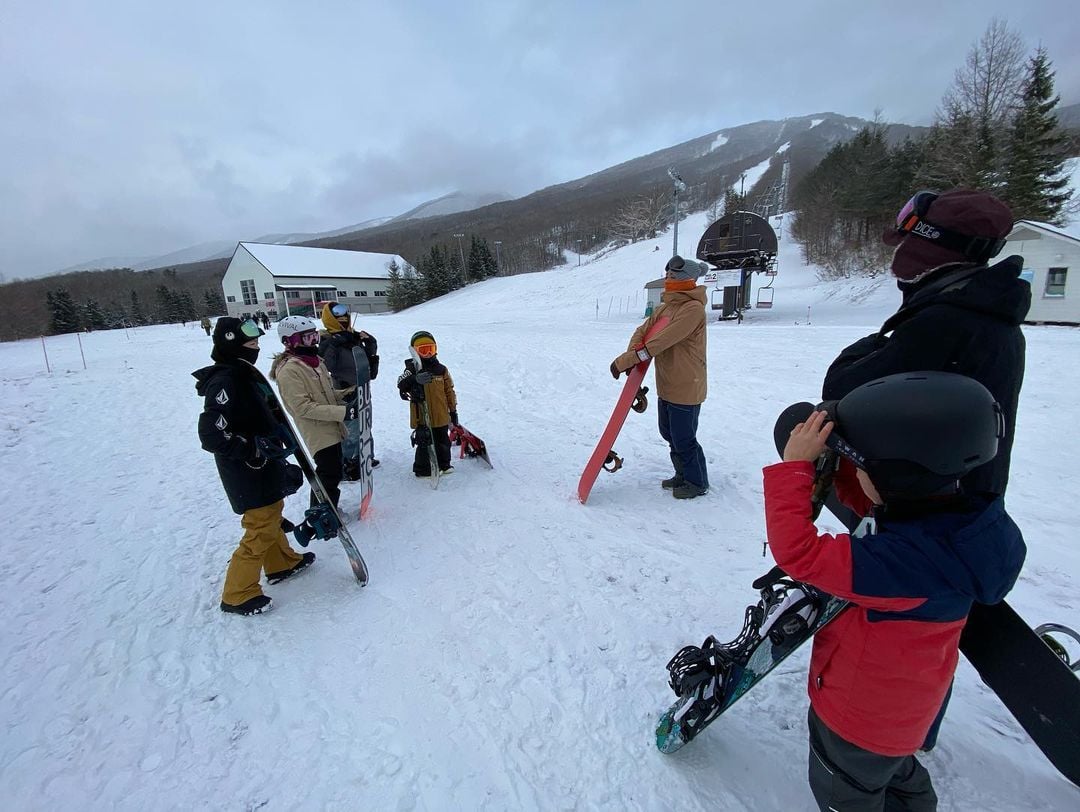
The resort is so big that the gondola system actually spans 2km.
Image credit: @ykhs526
Even if you’re a beginner, there are plenty of classes for new learners and also 3 beginner slopes, in addition to 7 slopes for intermediate and advanced skiers. It is also kid-friendly, with kids under 12 not having to pay for admission to the snow park.
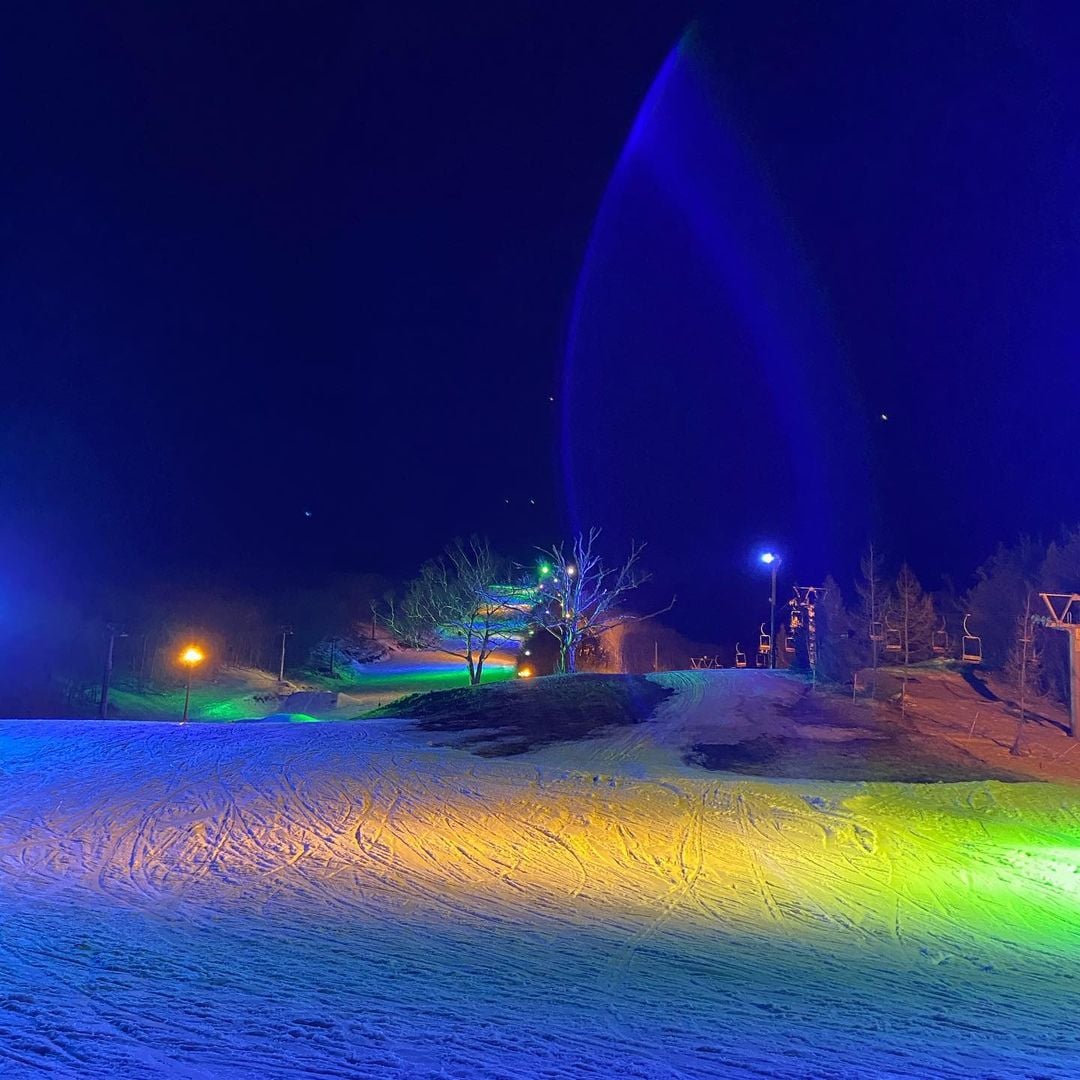
Image credit: @chan.shiba1013
To crank up the level of mysticism, Iwate Kogen Snow Park is one of the few snow parks that offers night skiing, not just with white lights but with an assortment of vivid aurora-like colours. With a 1-day passport ticket, which costs ¥6,600 (~S$65.40), you can ski to your heart’s content under the sun and moon.
Iwate Kogen Snow Park
Admission: From ¥4,400 (~S$43.60) [entry tickets] & from ¥3,000 (~S$29.75) [equipment rental]
Address: 22-362 Iwatesan, Nagayama, Shizukuisi, Iwate 020-0585, Japan
Opening hours: Fri-Sat 8.30am-10pm | Sun-Thu 8.30am-9pm (Hours differ based on season)
Contact: +81 19-693-4000 | Iwate Kogen Snow Park website
6. Slurp down some reimen and grill Maezawa beef at Daidoen
The first time you hear the term, “Three Great Noodles of Morioka”, you might guess ramen, udon, and soba. You’d be wrong. The three are actually reimen (of Korean origin), jajamen (of Chinese origin), and wanko soba (of Japanese origin).
Despite their different origins, these noodles have become beloved traditional dishes of the city including Morioka Reimen, imported by a Hamhung native from North Korea in the 1950s.
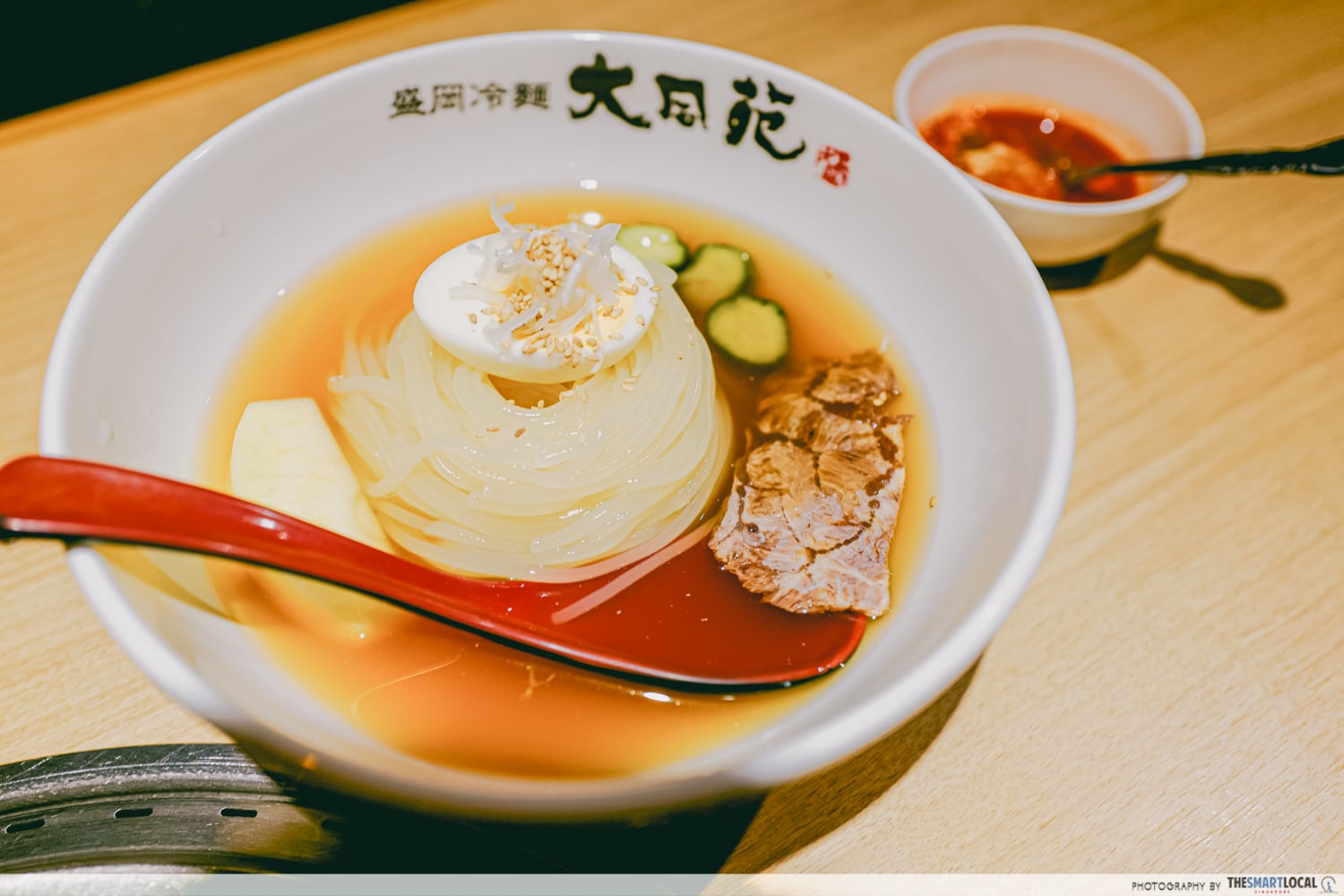
As you slurp down on the perfectly chilled noodles and a light broth made of beef and chicken, it feels like a dish that perfectly embodies winter. Depending on the season, the broth is infused with fruits like watermelons or apples.
If you like your noodles with a bit of kick or want to taste the traditional North Korean flavour, you can also mix some kimchi in to change the taste around.
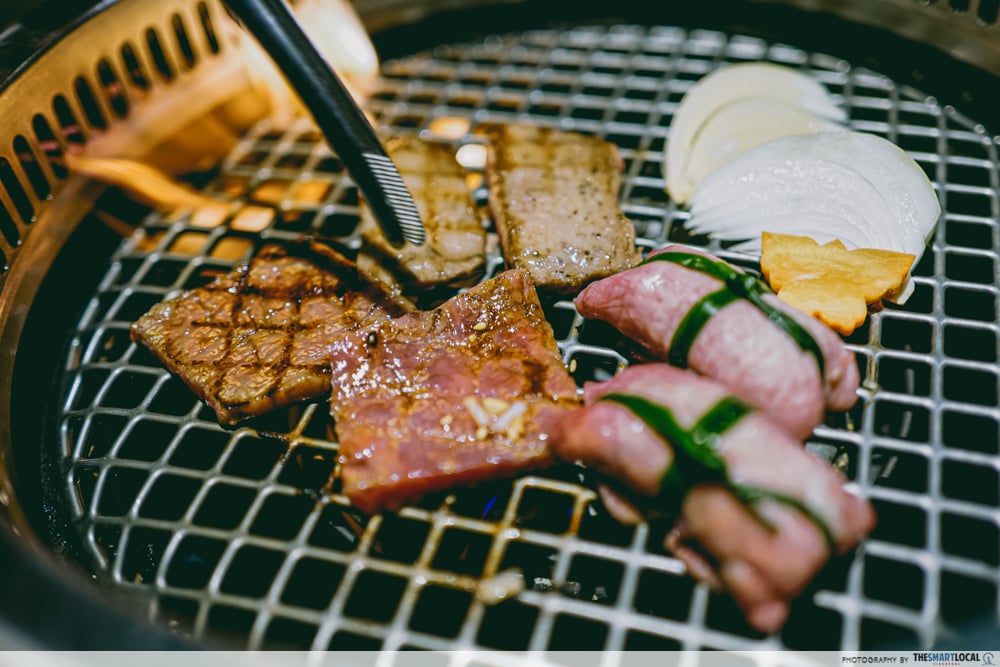
There’s nothing more tantalising than the sight and smell of marbled beef being grilled.
At Daidoen, you can get the Jyou Yakiniku Morioka Reimen Lunch Set (¥3,300, ~S$32.70) which includes top-grade Maezawa black wagyu. While lunch sets start at ¥800 (~S$7.95), the Jyou Yakiniku Morioka Reimen Lunch Set is the only set that comes with both Yakiniku meats for the grill and reimen.
In the set, you’ll get 6 pieces of Maezawa black wagyu including an assortment of superior kalbi rib, superior beef tongue, and beef tongue seasoned with leek and salt. It also comes with the reimen, a small rice, kimchi, a side salad, a dessert and a choice of coffee or tea. Making it an extremely value for money deal, or cospa (cost performance) as the Japanese now like to say.
Daidoen
Price: From ¥800 (~S$7.95)
Address: 2-6-19 Saien, Morioka, Iwate 020-0024, Japan
Opening hours: 11am-10pm, Daily
Contact: +81 19-654-5588 | Daidoen website
7. Curl like a winter olympian at Michinoku Coca Cola Skating Rink
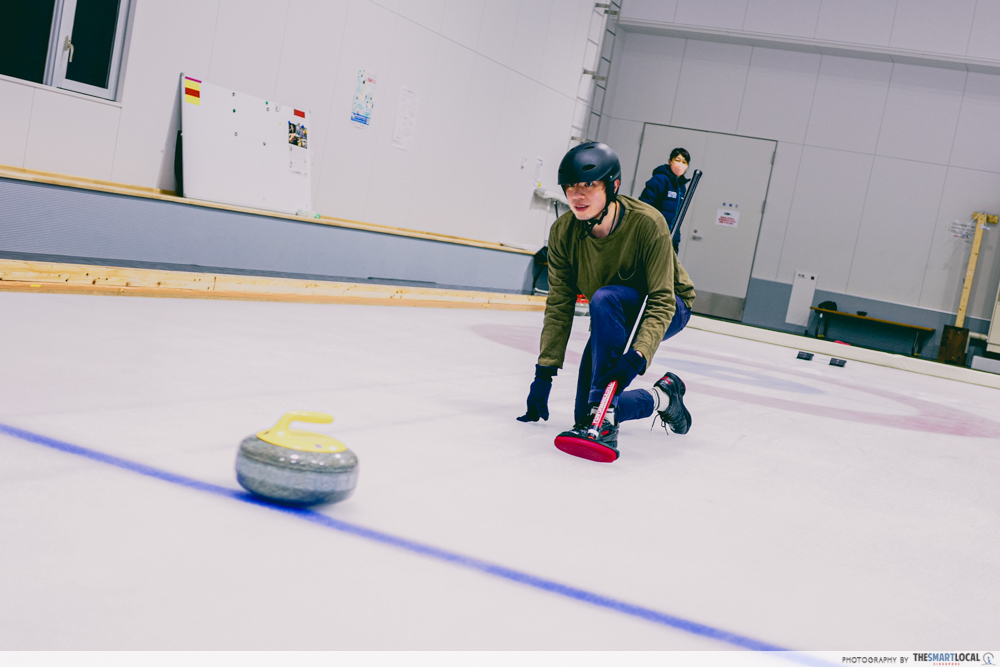
Gracefulness: 0/10.
As a kid, I tuned into the Winter Olympics on television once, and was puzzled by why people were sweeping the floor for sport. Curling might actually be one of the more visually unique sports of the Winter Olympics, a team sport where a thrower thrusts a curling stone forward and aims to land it in the centre of the target ring.
Two sweepers then use their curling brush to sweep the floor, melting the ice and increasing the speed as well as changing the direction of the stone.
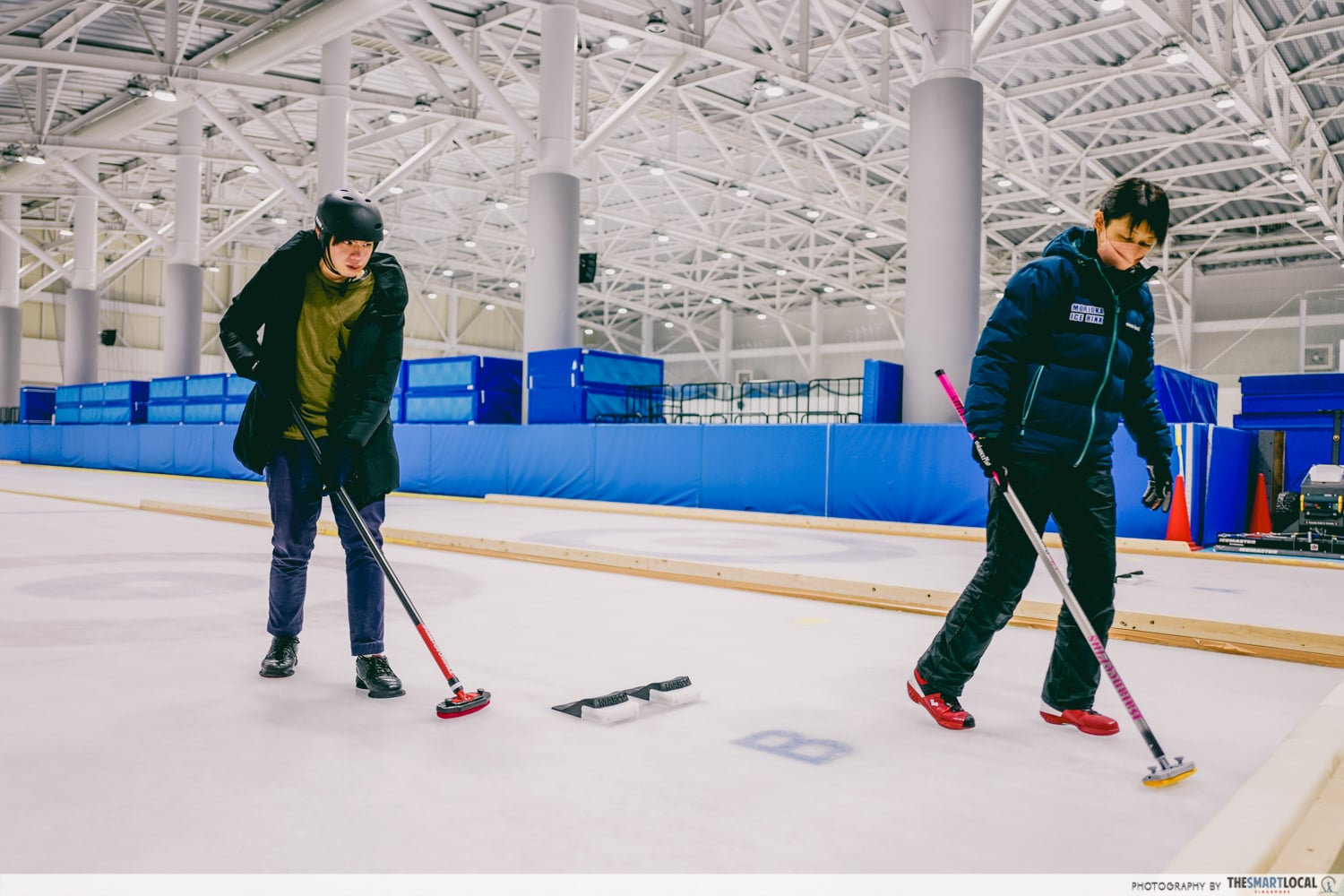
It’s just sweeping, they said. How hard could it be right?
While it might sound easy, it is anything but. Michinoku Coca Cola Skating Rink in Morioka city is one of only 13 places in the whole of Japan equipped with curling facilities. You can get a crash course with a curling experience lesson (¥2,000, ~S$19.80) running for 90 minutes with a local athlete coaching you on the basic forms, drills, movements, and techniques of curling.
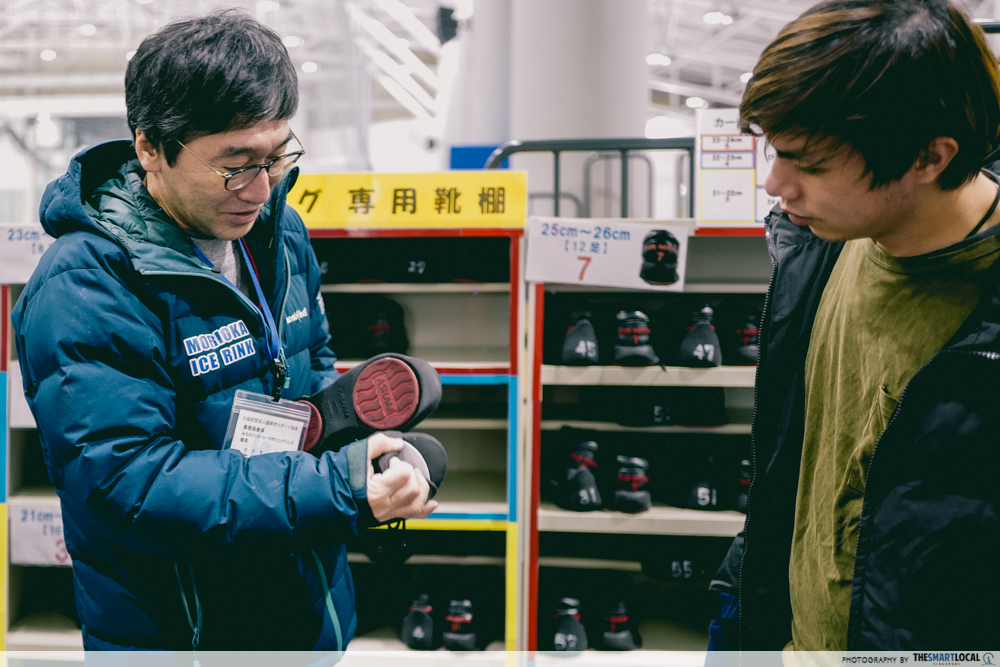
Staring at the frictionless shoe that would soon be the bane of my existence.
Unlike hockey or ice skating, curling doesn’t require the use of skates, but a pair of special shoes where only one shoe has friction and the other is completely smooth. It takes quite a bit of getting used to, but there’s a sense of accomplishment and fun from having learnt and experienced such a foreign and unusual winter sport.
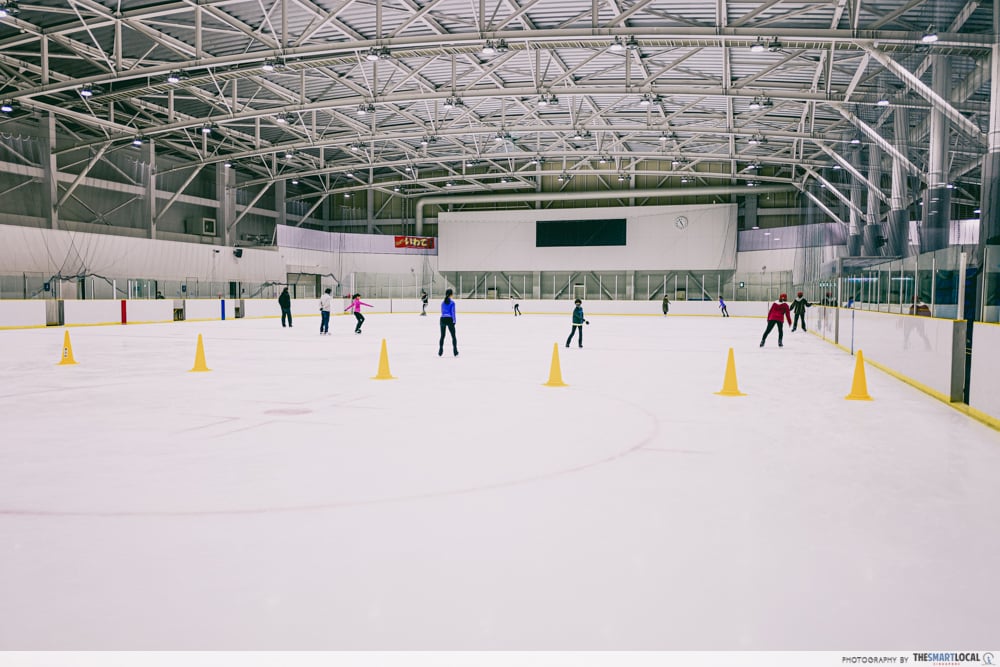
Of course, apart from curling, you can always go for a round of ice-skating in the rink with a single day’s entry and skate rental for ¥900 (~S$8.90). There are also small audience stands by the side, where you can sit and watch other skaters train for their routine as they perform jumps and spins in time with the music.
Pro tip: If you’re an ice-skating fan, you can find an autograph by two-time Olympic gold medallist and every Japanese girl’s heartthrob, Yuzuru Hanyu, hanging by the entrance of the rink.
Michinoku Coca Cola Skating Rink
Price: From ¥2,000 (~S$19.80) [90-minute curling lesson]
Address: 5-3-3 Motomiya, Morioka, Iwate 020-0866, Japan
Opening hours: 10am-6pm, Daily
Contact: +81 19-601-5001 | Michinoku Coca Cola Skating Rink website
8. Be transported back to the Edo era at Tono Furusato Village
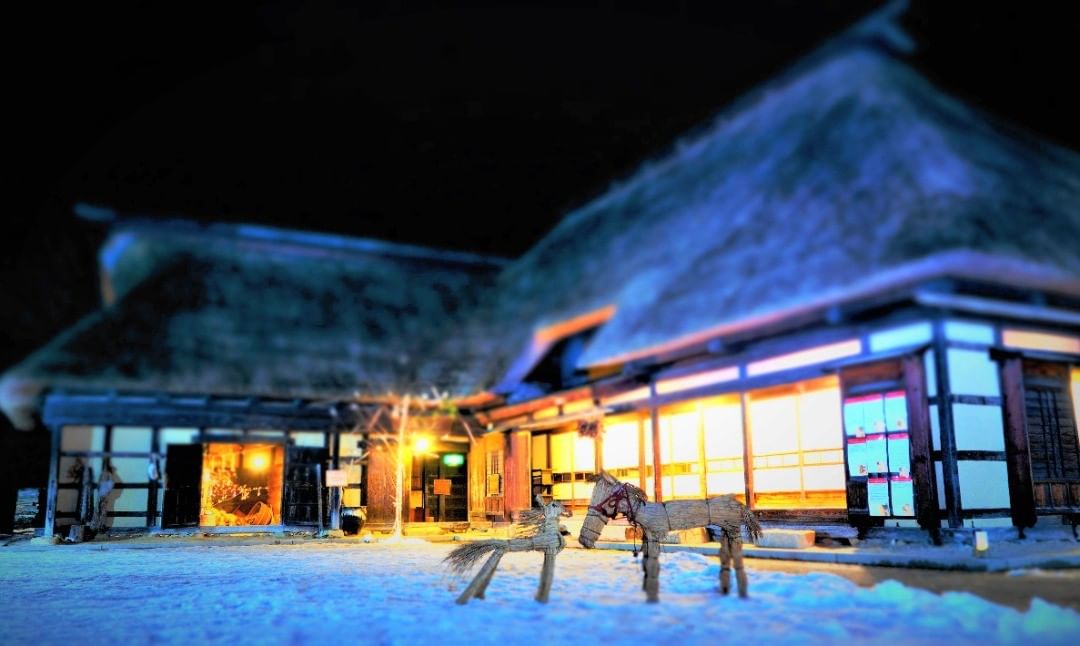
Image credit: @o_ishida
Known as the folklore capital of Japan, Tono is said to be the home of the kappa, a Japanese water spirit that resembles a humanoid turtle and dwells in water bodies. Explore this loving recreation of the 1700s at Tono Furusato Village, as you walk through the rows of thatched roof houses, water wheels and charcoal burning huts. You can even spot various statues of kappa littered around.
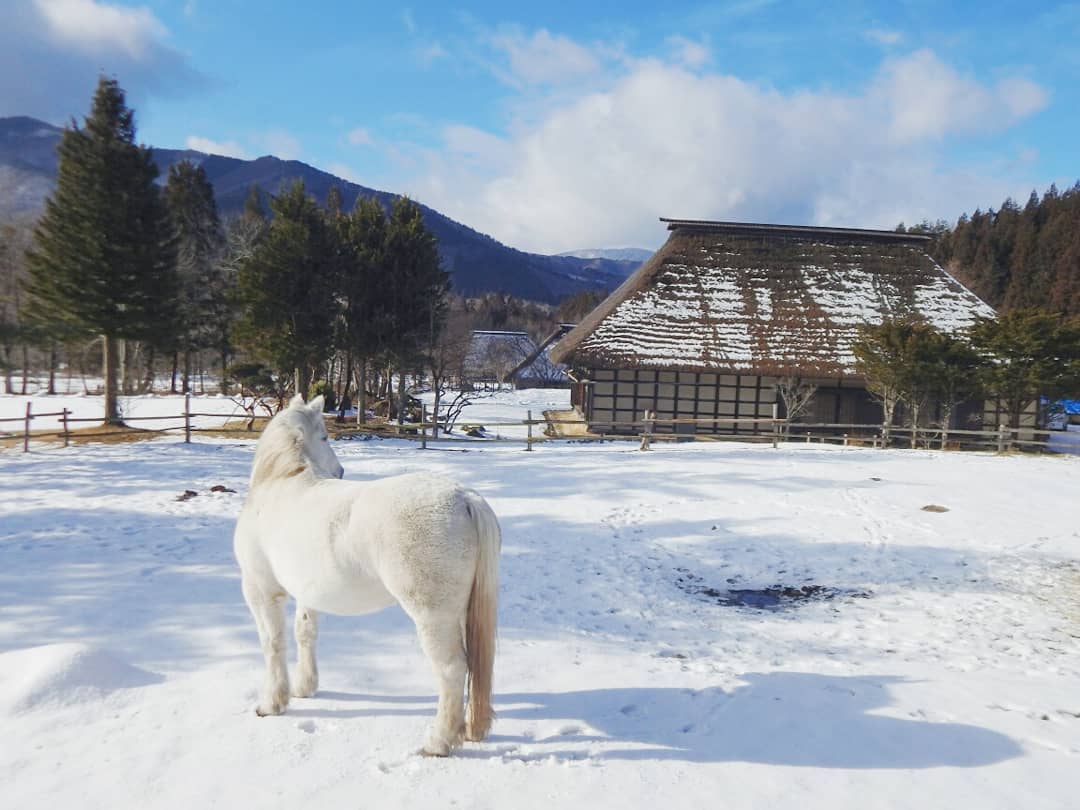
Detach yourself from modern civilisation, surrounding yourself with only wooden huts and horses as you walk on the snow-laden paths through the village.
Image credit: @andreaindovino
Organised by the elderly members of the village to continue old traditions, you can participate in a variety of traditional activities like pottery (from ¥800, ~$7.95), mochi making (¥800, ~$7.95), and soba making (¥1,500, ~$14.85).
These activities run from 60-90 minutes, and let you experience things the traditional way like pounding the rice flour for the mochi with a giant mallet, or hand-kneading the buckwheat flour to make soba.
Tono Furusato Village
Price: ¥550 (~S$5.45)
Address: 5-89-1, Tsukimoushicho Kamitsukimoushi, Tono, Iwate 028-0661, Japan
Opening hours: 9am-5pm, Daily (Open till 4pm from November to February)
Contact: +81 19-864-2300 | Tono Furusato Village website
BONUS: Go micro-brewery hopping in Japan’s hops capital, Tono
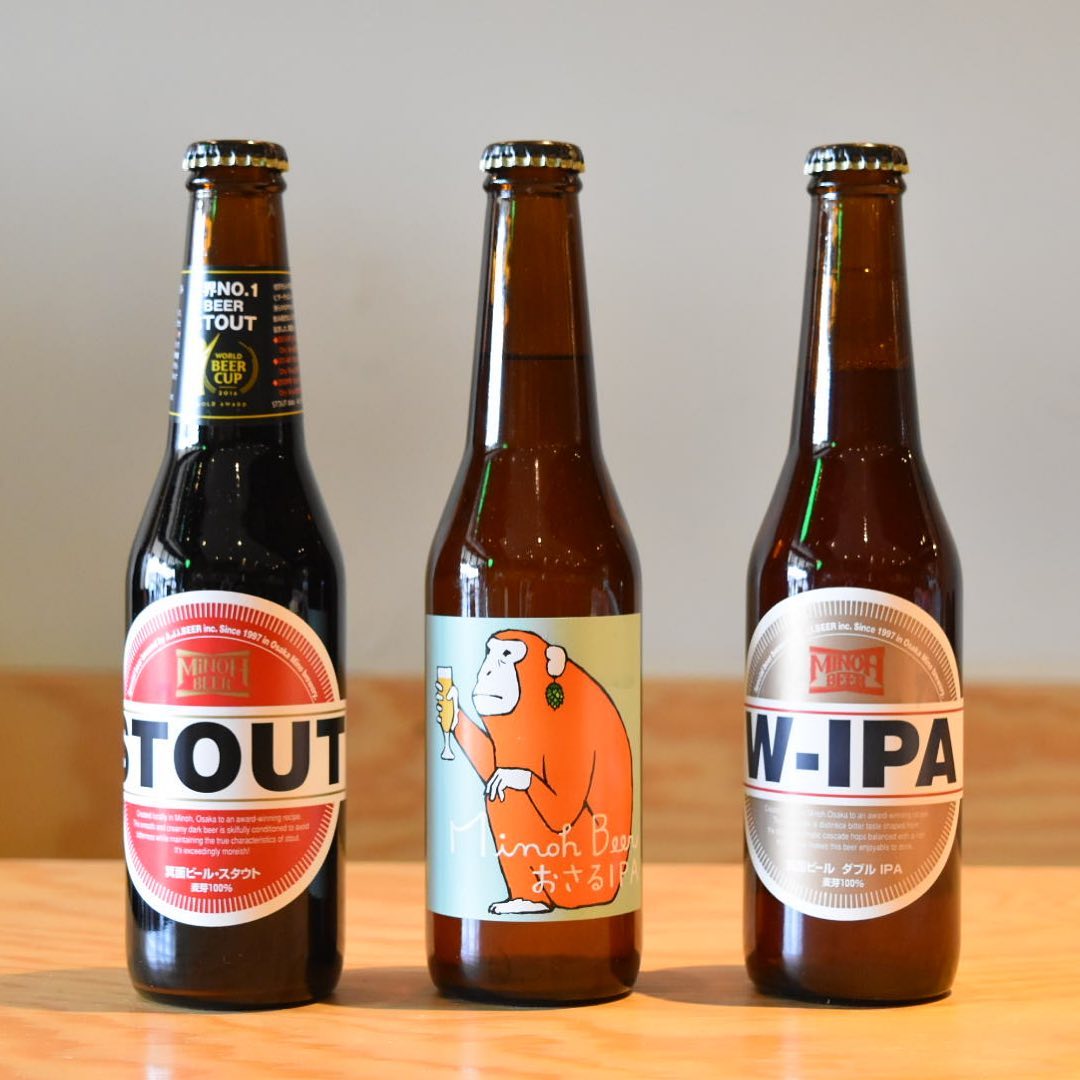
Image credit: @tonobrewing
For a taste of these local beers, you can check out Tono Brewery Taproom, a former sake brewery repurposed into a micro-brewery through a crowdfunding project. They produce 25 different varieties of craft-beer each year using local crops, and have six on tap each day.
They also run a variety of experiences including a beer hopping guided tour (¥8,500, ~S$84.20) where they curate an itinerary of breweries and guide you along, as well as a brewery and tasting tour in summer (¥13,000, ~S$128.80) that includes a harvesting experience at the hops plantation, a brewery tour, beer tasting, and also a meal course of genghis khan (Hokkaido-style barbeque).
Tono Brewery Taproom
Address: 10-15 Chuodori, Tōno, Iwate 028-0523, Japan
Opening hours: Mon & Wed-Fri 5pm-10pm | Sat 12pm-10pm | Sun 12pm-9pm (Closed on Tuesdays)
Contact: +81 19-866-3990 | Tono Brewery Taproom website
9. Enjoy a night on the galactic railroad at Koiwai Farm
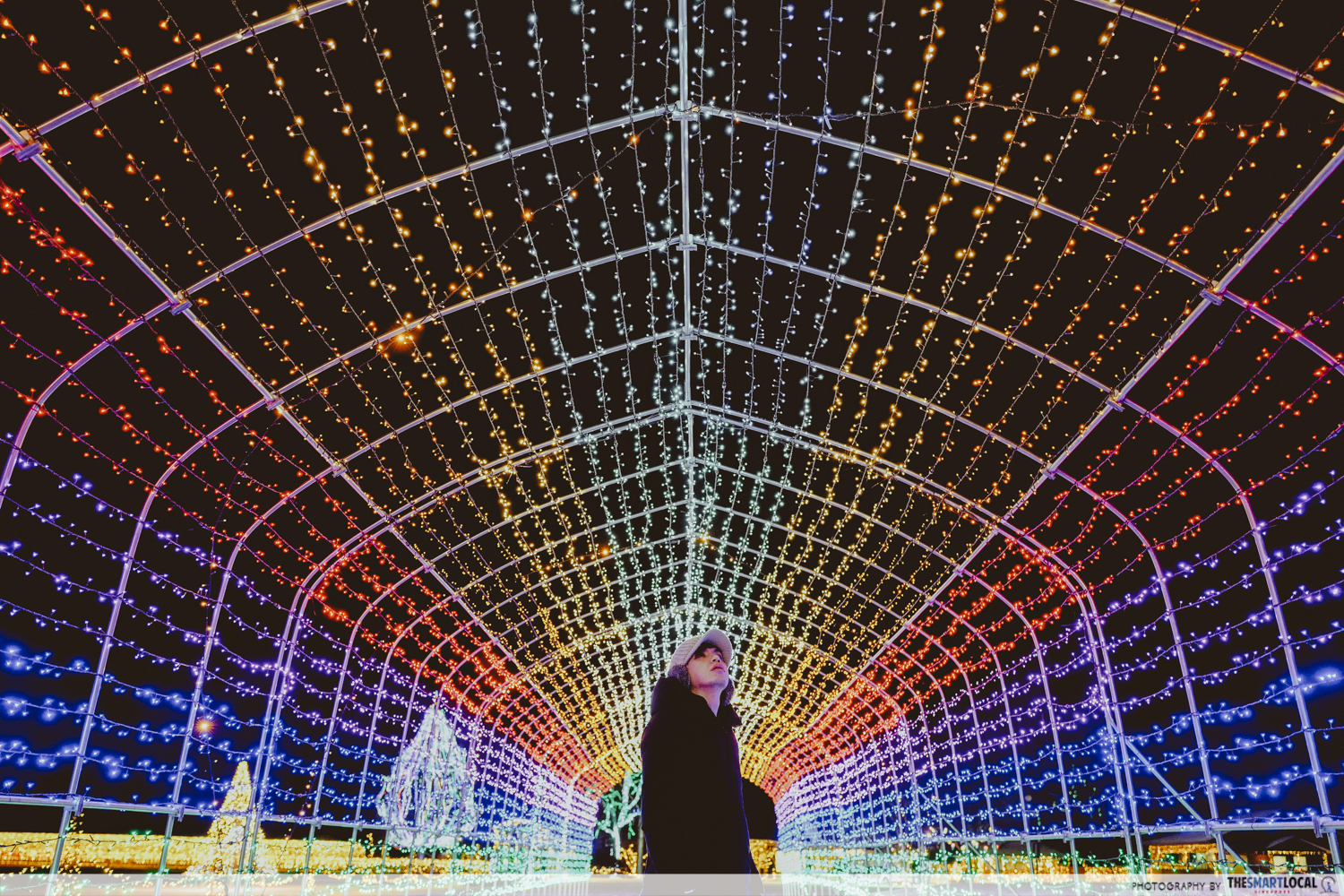
By day, Koiwai Farm is one of Japan’s oldest and largest farms spanning 3,000 hectares, and by night it transforms into a fantastical snowy environment covered in illuminations inspired by Miyazawa Kenji’s 1931 “Night on the Galactic Railroad”, a classic fantasy novel that has inspired an animated film, dramas, plays and is as famous a tale to the Japanese as Snow White is to us.
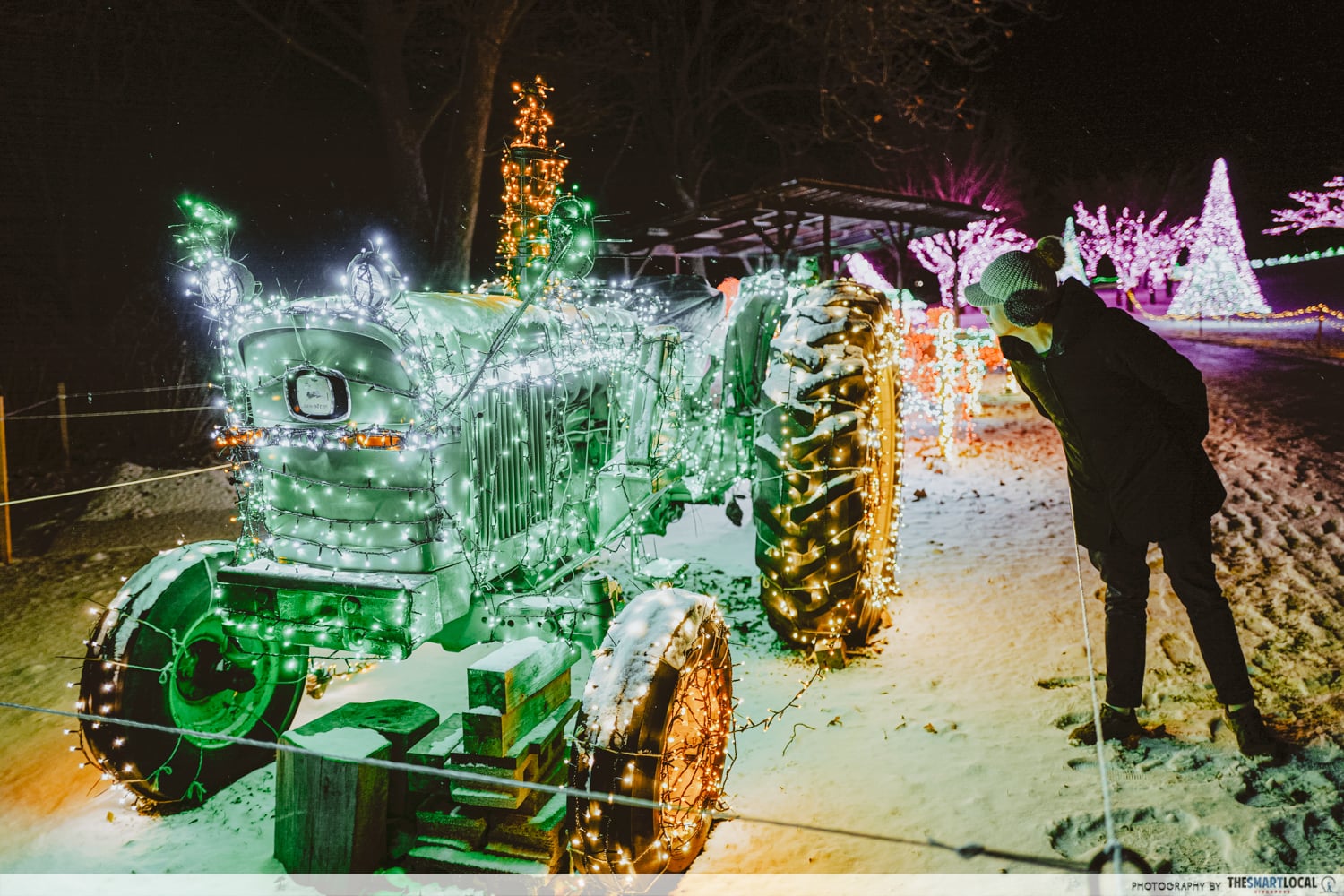
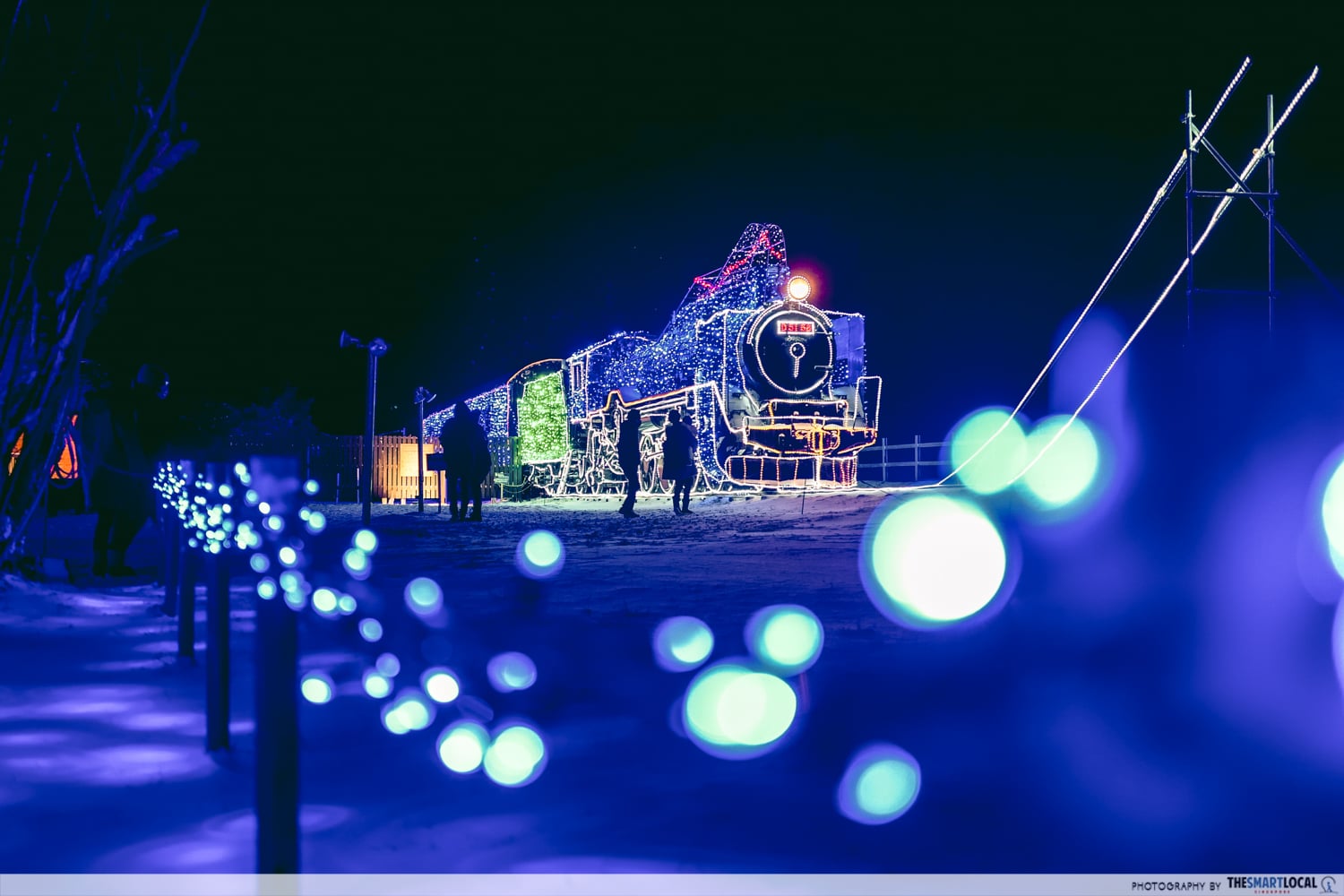
Koiwai Farm puts on a spectacular illumination that gets bigger and bigger every passing year, continuing the illuminations from previous years while adding new ones each year.
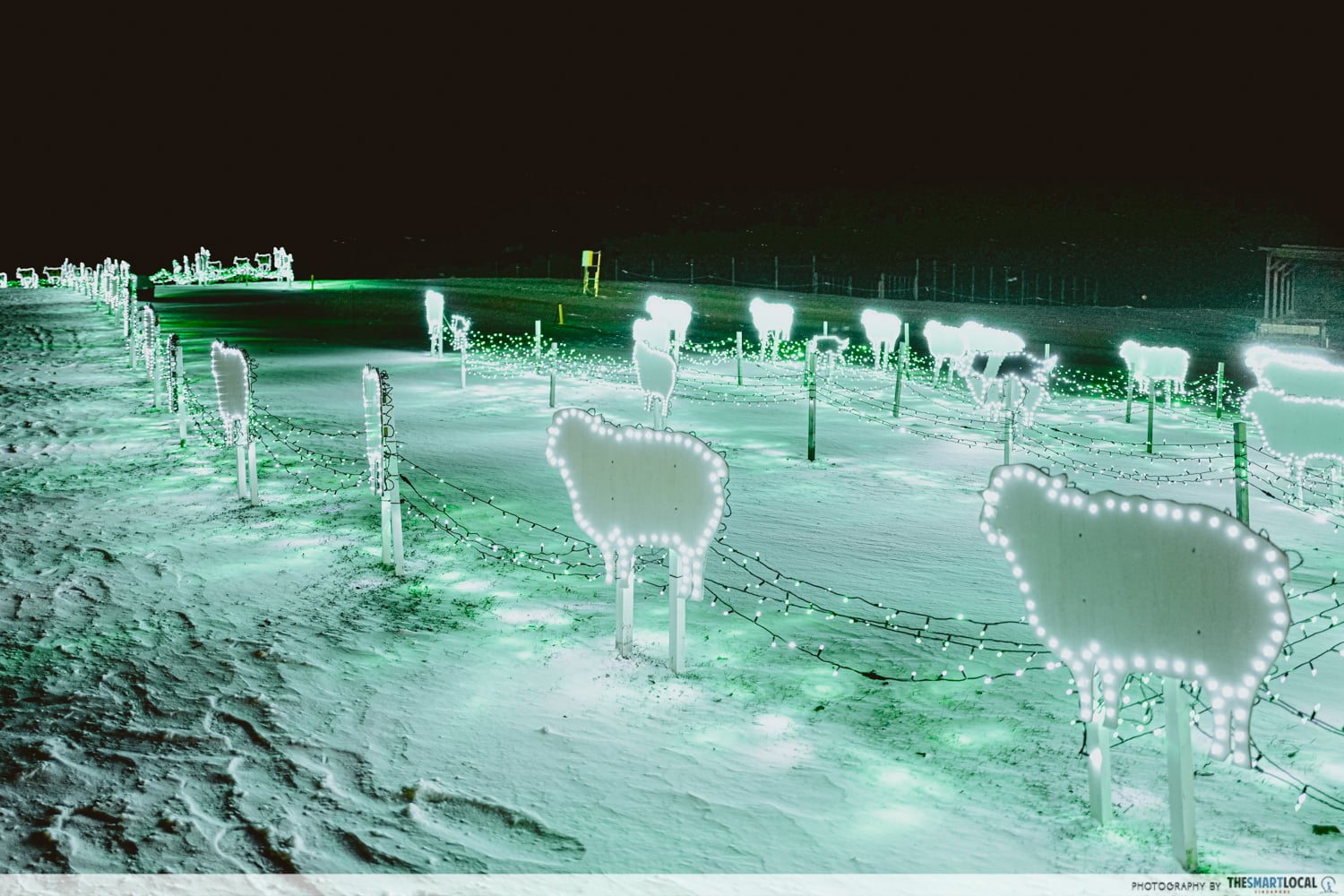
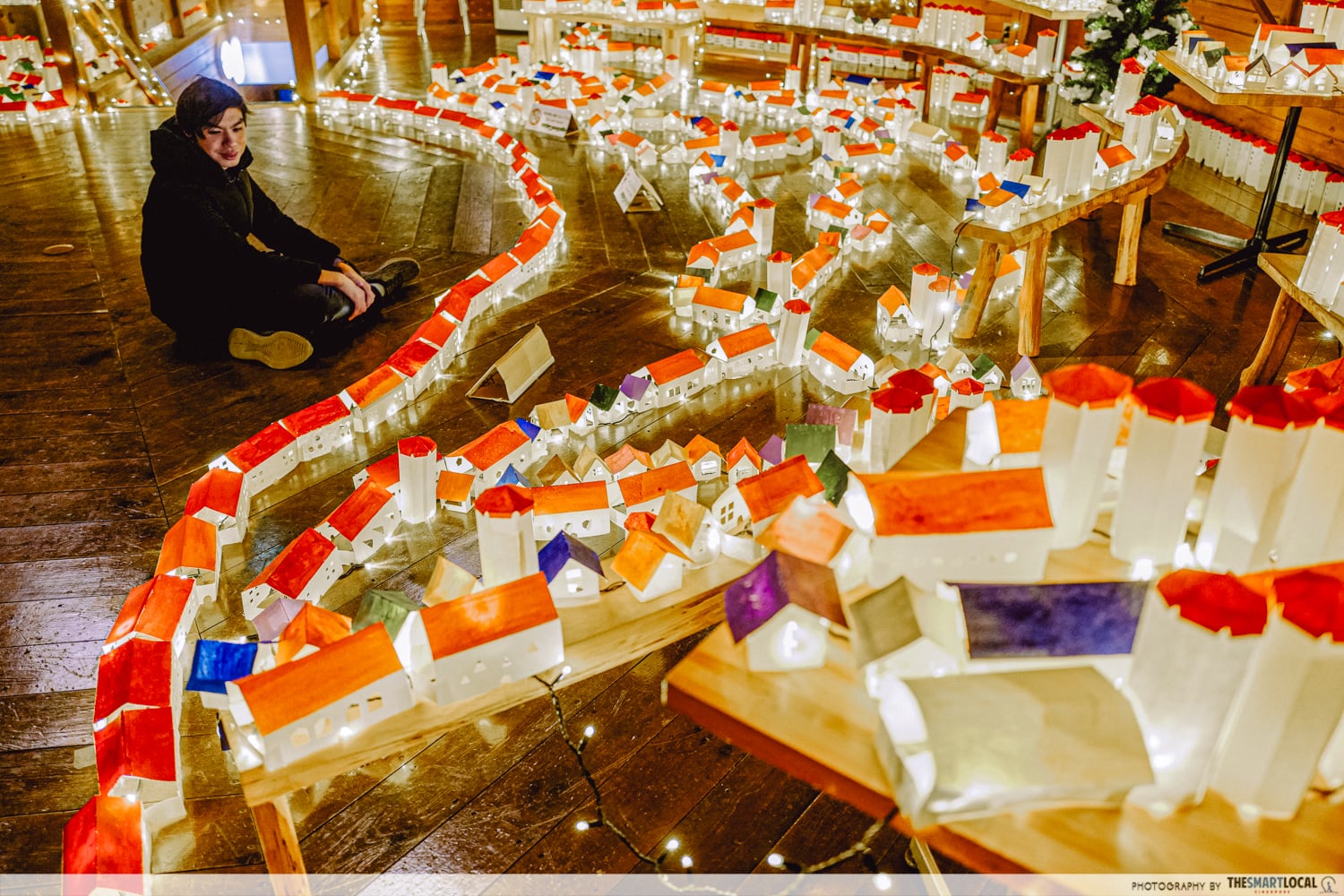
There’s a childlike sense of Christmas wonder as you look at this miniature town.
One of the awe-inspiring additions this year was a miniature town made out of milk cartons, located within the Milk Hall of the farm. Handcrafted by the members of the Iwate Hidamari Nouen Disability Support Center in Takizawa city, the display sprawls across half the floor with an intricate mishmash of buildings across different levels that resembles Santorini.
Plus, if you’ve ever wanted to experience those kimodameshi (tests of courage) that you’ve seen in anime, then try the one at Koiwai Farm.
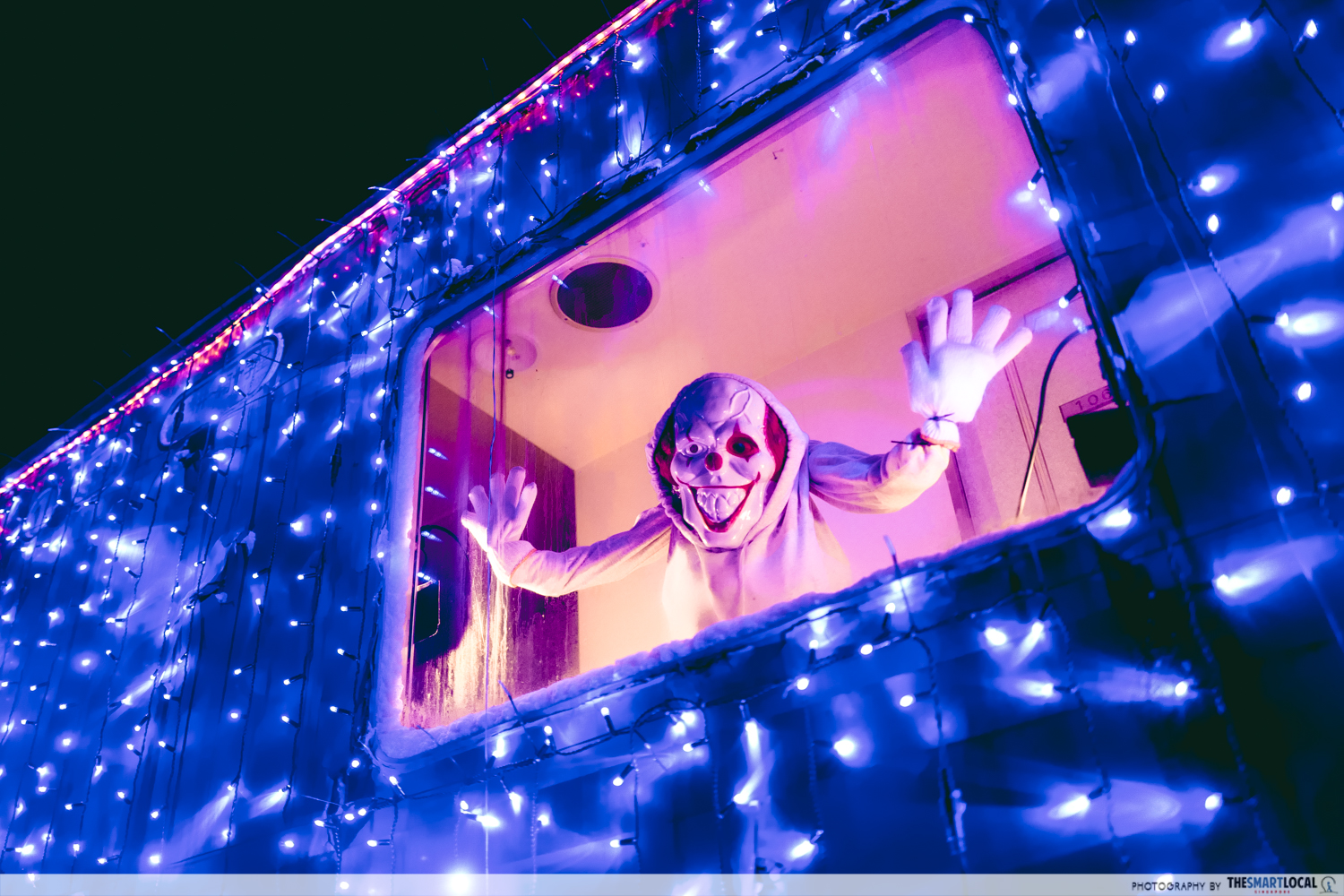
Disclaimer: It’s not for the faint of heart, and if you have coulrophobia a.k.a. fear of clowns, I recommend you stay far away.
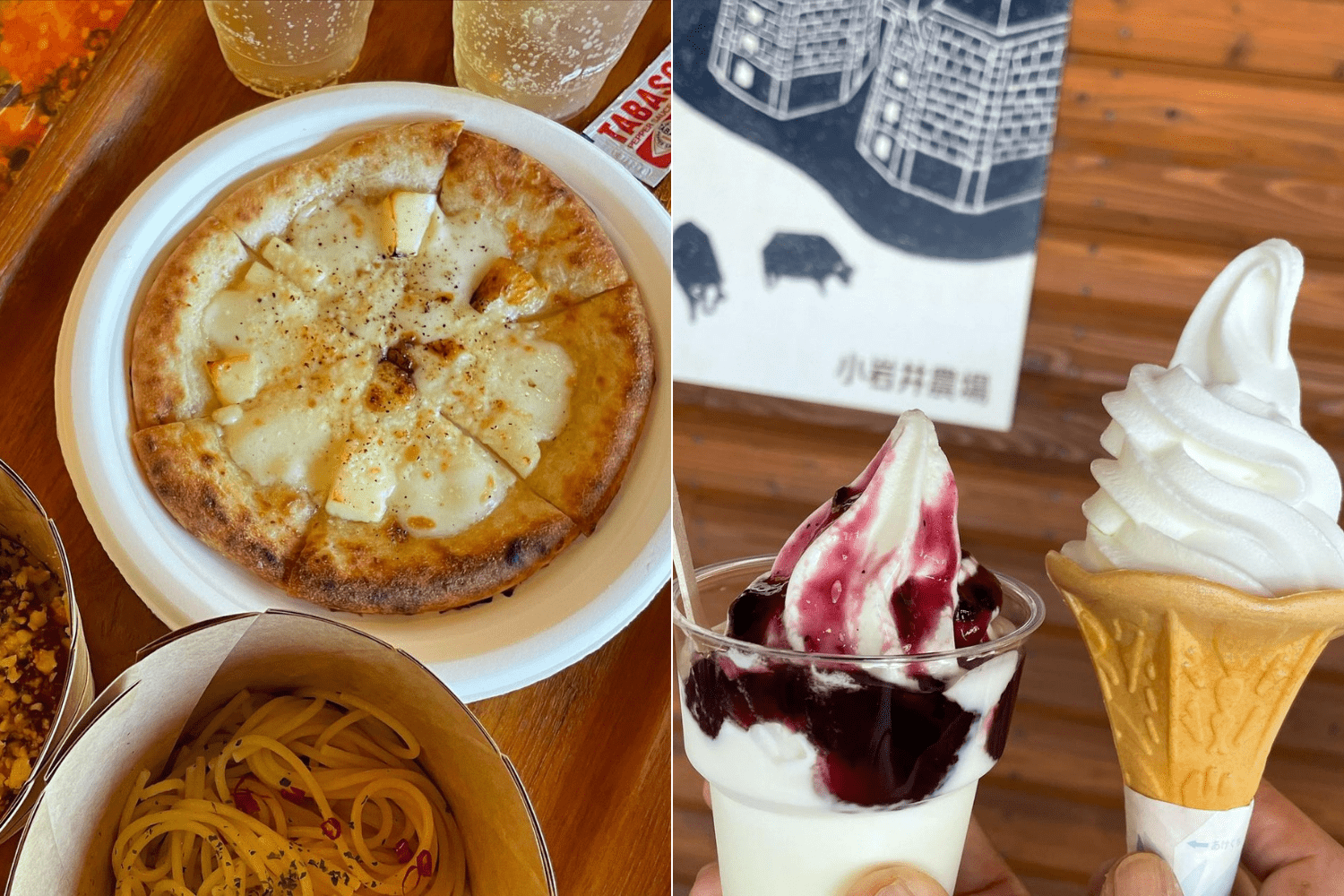 Image credit: @20keeeko
Image credit: @20keeeko
Be sure to try out the Curry Milk Ramen (¥700, ~S$6.95), Four Cheeses Pizza (¥900, ~S$8.90), and Milk Soft Serve (¥400, ~S$3.95) at the food establishments throughout the grounds made with farm to table ingredients.
The cheese and milk are all made in-house at Koiwai Farm, and go through less processing since they don’t need to be kept on supermarket shelves.
Koiwai Farm
Price: ¥500 (~S$4.95)
Address: 36-1, Maruyachi, Shizukuishi, Iwate 020-0507, Japan
Opening hours: 9am-5pm, Daily
Contact: +81 19-692-4321 | Koiwai Farm website
BONUS: Visit a whimsical art exhibition at Miyazawa Kenji Village of Fairy Tales

If you’re a culture vulture who can’t pass up an art exhibition, then you’ll find a novel experience at Miyazawa Kenji Village of Fairy Tales, a museum that honours the works of Kenji Miyazawa, a local poet and author who grew to fame posthumously around the world.
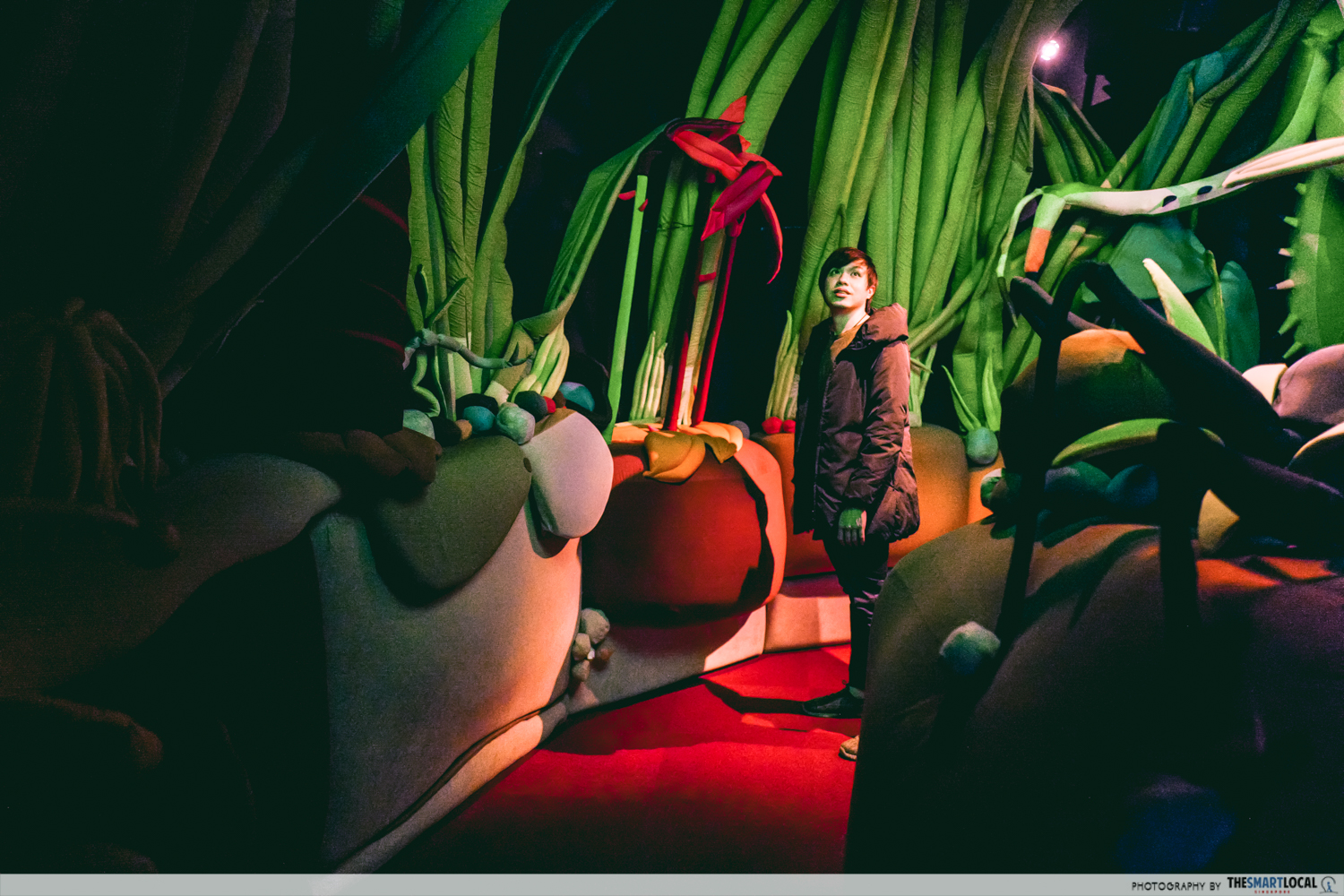
Look out for whimsical, larger-than-life installations that include an Alice in Wonderland-like exhibit where you’ll feel like you’ve shrunk to become the same size as ants and insects. The wide, open area surrounding the museum also gives you a glimpse of Ihatov, Kenji’s vision of a utopia where humans, animals, and nature are all equal.
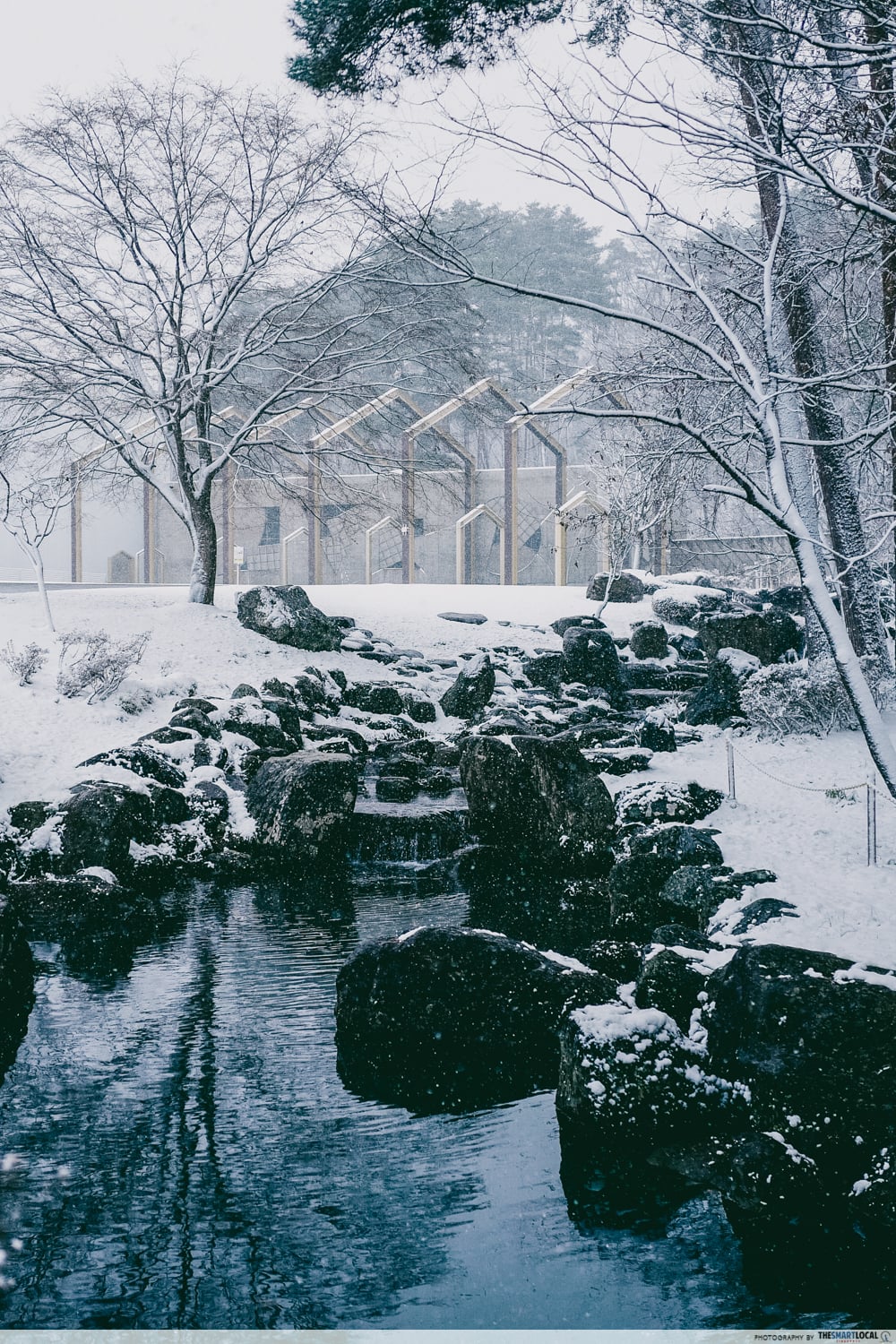
Miyazawa Kenji Village of Fairy Tales
Price: ¥350 (~S$3.45) for admission
Address: 26-19, Takamatsu, Hanamaki, Iwate 025-0014, Japan
Opening hours: 8.30am-4.30pm, Daily
Contact: +81 19-831-2211 | Miyazawa Kenji Village of Fairy Tales website
Fall in love with the winter wonderlands of Aomori and Iwate
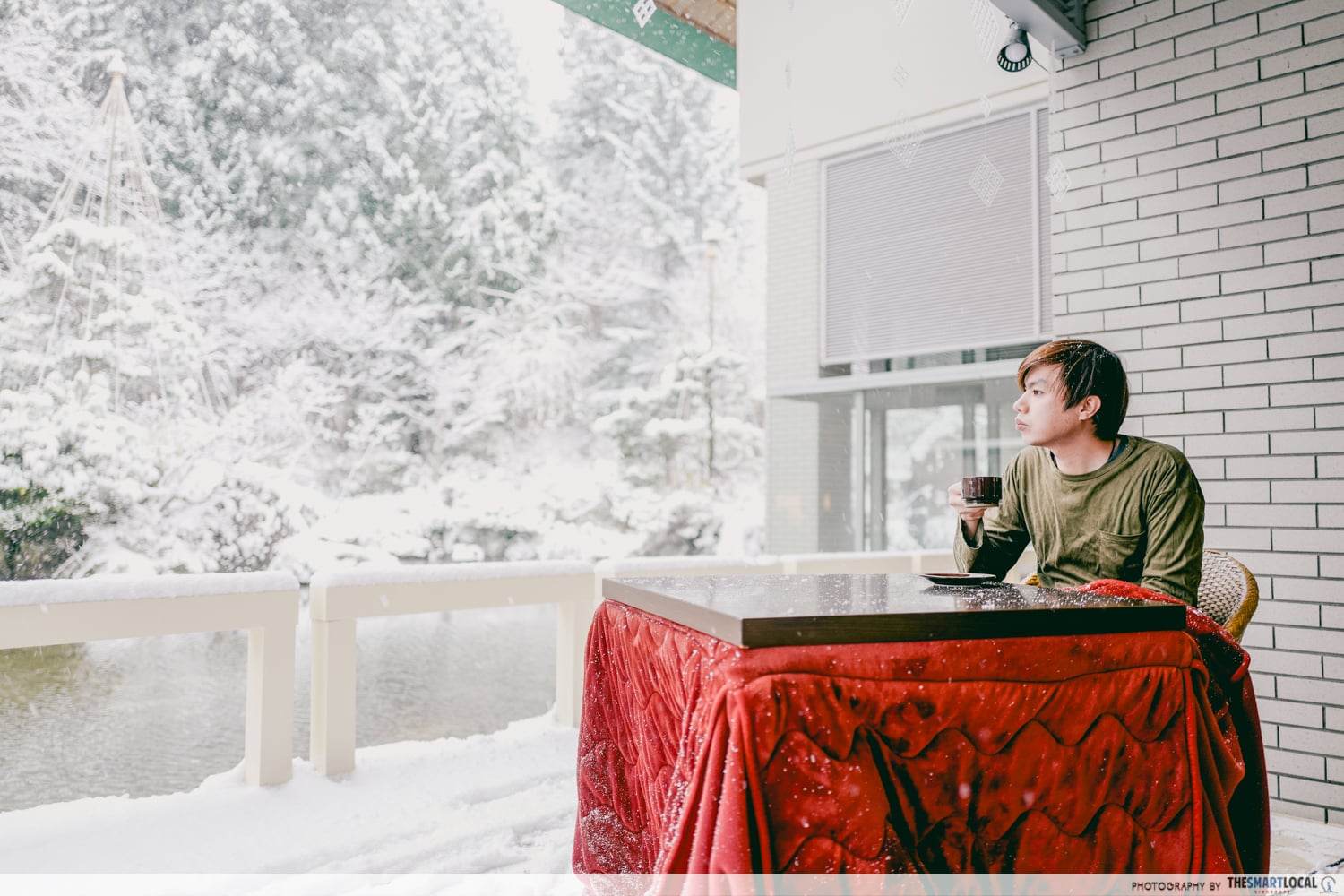
With seafood, a dash of fantasy and fairy tales, illuminations, skiing and curling, Aomori and Iwate give you a taste of culture and winter at the same time.
I think we can all agree that there’s something magical about Japan that keeps us coming back time and time again. Whether you’re hungry for a true taste of what every region has to offer, or just returning out of sheer comfort, strap yourself in for a new adventure and give Aomori and Iwate a shot.
Even if you can’t pass up a pitstop in Tokyo, Hachinohe in Aomori and Morioka in Iwate are both only a couple of hours away via the Tohoku shinkansen.
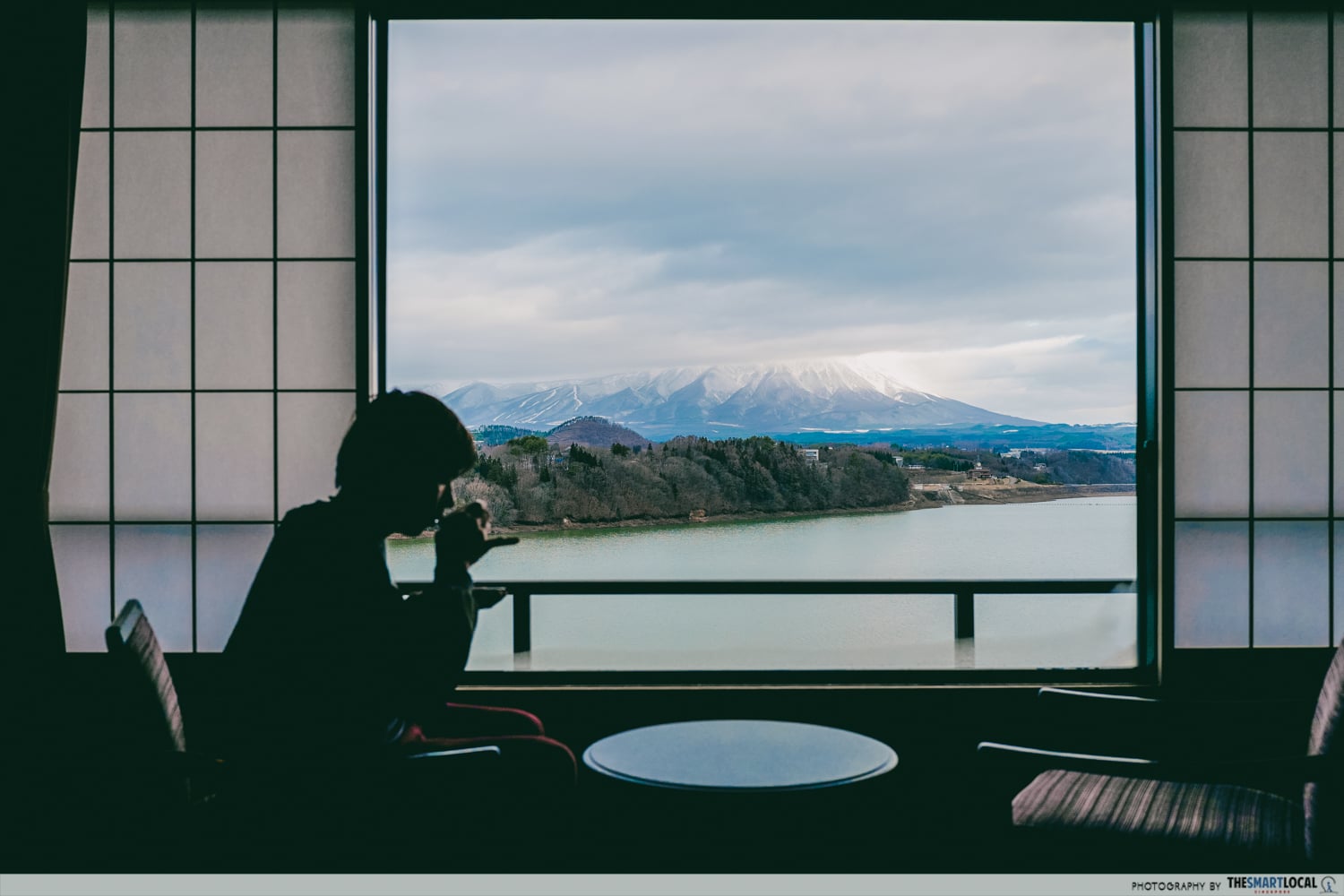
For those who’ve already set their sights on a trip to Aomori, put KAI Tsugaru Hoshino Resort on your radar. This visually stunning modern Japanese ryokan houses 40 spacious guest rooms (rates start from ¥16,000/night or ~S$112.65/night) in the heart of Aomori and is a stone’s throw away from attractions such as the Hirosaki Castle, Lake Towada, the Oirase Gorge and Hakkoda mountains.
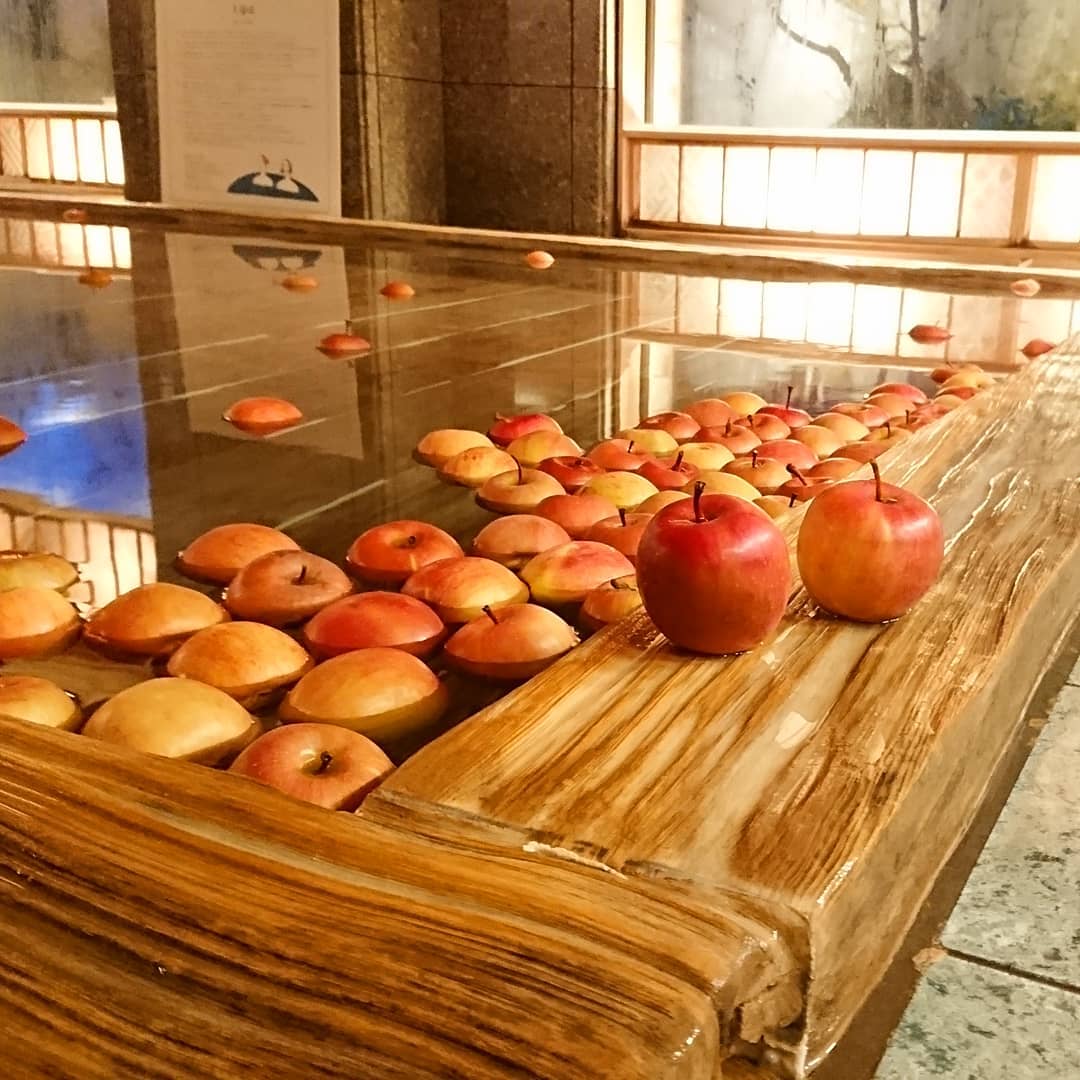
Don’t miss the hotel’s indoor apple onsen that sits in cypress wood that’s over thousands of years old and touted to have medicinal properties.
Image credit: @sachi_apri
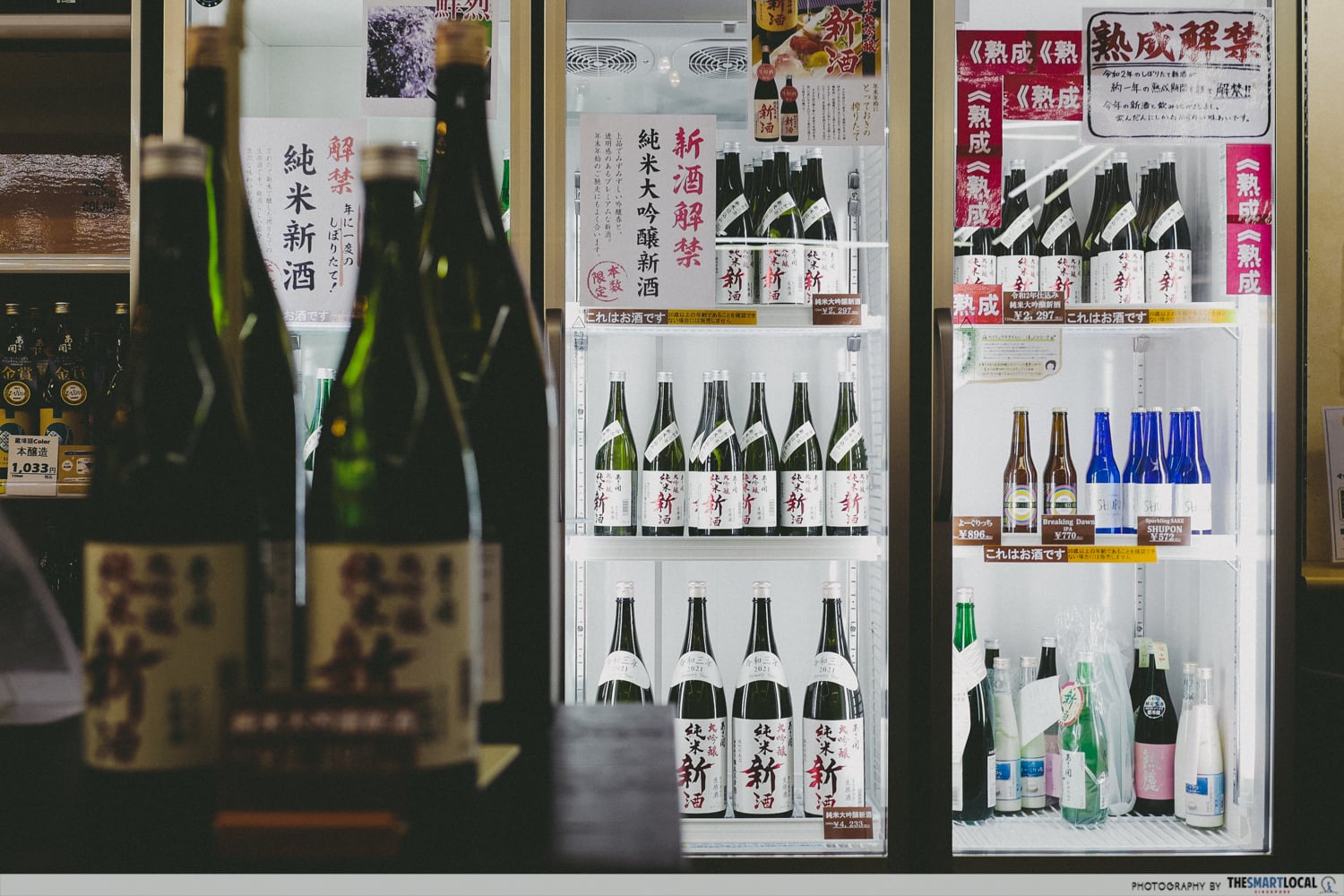
Over in Iwate, sake connoisseurs should make the trip down to Asabiraki Sake Brewery, 21-time gold medal winner at the Annual Japan Sake Awards where you can tour the factory’s grounds or sample your way through their range of handcrafted sakes.
This trip brought me to the furthest north I’ve been in Japan, and I was happy to find that yes, there is more to Aomori than just apples! While Aomori and Iwate might be more under the radar destinations, as compared to Hokkaido, they offer an unusual escape into a winter fantasy.
Plan a trip to Aomori & Iwate today
This post was brought to you by JNTO.
Photography by Lee Xian Jie.
Cover image adapted from: @sachi_apri, @andreaindovino
Article originally published on 17th Feb 2022. Last updated on 30th Sep 2022.
